







Q&A WITH:

Michele Kauinui Director of HR Services ALTRES
Many of your customers and clients are facing huge challenges this year. What are those challenges and how can you help them?
Attracting and retaining the best employees continues to be a top challenge
for many of our clients. Smaller businesses often find it hard to compete with those that can offer higher pay and richer benefits.
We collaborate with clients to align HR strategies with organizational goals. For some, it may be basics like creating job descriptions and training managers to interview more effectively. Others may need help in assessing how their pay and benefits compare in the market. For ongoing and immediate staffing needs, many of our clients look to ALTRES Staffing as an extension of their recruitment efforts.

What is the most important change or trend impacting your industry in 2025?
Who would have expected that “Artificial Intelligence” would become integral to HR? Although you can’t (or shouldn’t) take the “human” out of human resources, AI has proven to be an important and viable tool in the world of HR.
Another challenge many clients face is keeping up with ever-changing employment laws. As state and federal laws may differ, it’s essential for every business to have HR support to help keep them compliant and mitigate potential risk.
In 2024 alone, Hawaii raised its minimum wage, and the pay transparency law took effect. Federally, a noncompete ban was overturned before implementation, and an overtime rule raising the white-collar salary threshold was struck down after taking effect on July 1. We follow these changes and keep clients informed of the latest HR news.
AI can automate tedious or time-consuming tasks so that resources can be allocated to more value-driven areas. Our proprietary software, HR Symphony, leverages AI to assist clients in creating job descriptions that are thorough and strike the right tone. AI can also provide data-driven analytics for better decision-making, as well as personalized training experiences based on an employee’s skills, progress, and learning style.
While it’s vital to use AI responsibly to prevent bias and poor decision-making, the potential benefits of AI in HR are vast.


ONE BIG PLUS FOR HOSPICE PATIENTS: IT’S EASIER TO SPEND TIME WITH FAMILY THAN IN A HOSPITAL.


14
New Hawaiian Airlines
CEO Tells Us What’s Next Joe Sprague discusses Neighbor Island flights, prices, coordination with Alaska Airlines, the fate of nonunion employees and more.
37 Local Hospice: Separating 5 Myths from the Reality Hospice leaders describe why it might be a good fit for you or your loved one, but don’t delay family conversations until the last days.
52
Keep the Country Country by Building Up the City That means increasing density in existing urban areas. That may be the least expensive way to build more housing priced for locals.
54
Homebuilders Association Trains Entry-Level Workers
The builders’ concerns include a labor shortage, tariffs – especially on Canadian lumber – permits and the many regulations that drive up costs.
58
Next Rail Stops: Airport to Middle Street in 2025 And though funding only takes the third segment to South Street, HART leaders still want to take rail to Ala Moana Center.





Tiny Oilseed Could Power Hawai‘i’s Jets and Cars
A trio of large local companies are working to turn a local cover crop into renewable fuel for utilities, vehicles and passenger planes.

Nonprofit Has Helped People Get Back on Track since 1919
One of Aloha United Way’s most used resources is its statewide 211 Helpline. In 2023, AUW’s 211 and Substance Use Disorder helplines received a total of 58,143 requests for help.
9
We Won’t Wait for Hollywood: Local Filmmakers Make Own Show
The trio are now filming the second season of “Moku Moku,” a half-hour comedy that follows the misadventures of three friends on Maui.
12
Hui Kapili Accelerator Feeds Local Pipeline of Contractors
10-week program graduated 16 leaders from 10 small and medium companies that were hoping to scale up their contracting businesses.
61
Art + Flea and Mori Are Where Creativity Meets Community
O‘ahu’ʻs original makers market continues to offer items from a diverse range of local creators, including illustrators, clothes makers, woodworkers and others.
66
Shipping, Air & Transportation
Your 2025 guide to one of Hawai‘i’s most vital industries.
31
Keeping Hawai‘i Healthy
Read how local health care leaders will address key issues in the coming year.
47
TRUMP AND THE REPUBLICAN PARTY’S TRIUMPH IN THE 2024 ELECTIONS WAS THEIR SUCCESS IN CHANNELING THE MONEY, POWER AND INFLUENCE OF THEIR ELITE SUPPORTERS WHILE SIMULTANEOUSLY HARNESSING VOTERS’ ANGER AGAINST ELITES. As in every election, Democrats had the backing of their own elites, but their message to ordinary voters failed to resonate as effectively.
Trying to understand what comes next for America and Hawai‘i has led me along many paths, with one leading to the annual Elite Quality Index. This global framework assesses the roles of elites in creating sustainable and inclusive economic and social development in a nation. Do they contribute positively or negatively to the overall well-being of a country and its people?
The EQx is produced by the University of St. Gallen in Switzerland and its partners, who say they focus on “elite quality” rather than simply economic or political power. One reason for my interest in the index is that it aligns with the work of Daron Acemoglu, an economics professor at the Massachusetts Institute of Technology and co-author of several insightful books, including my favorite work of nonfiction, “Why Nations Fail.”
The book’s broad look at world history – covering dozens of modern and historical societies – persuasively answers the crucial question: Why are some nations rich and others poor? Acemoglu and co-author James Robinson argue that the main factor is whether a nation’s institutions are inclusive or extractive.
Inclusive institutions foster development by distributing power broadly and allowing outsiders to ascend into the elite, the authors say. Extractive institutions, usually controlled by elites, hinder growth by concentrating power and wealth.
The EQx tackles the same issue in the here and now: Do a nation’s elites contribute to overall social and economic well-being or do they focus more on extracting resources for their own interests? It is OK for elites to further their own interests if they also further the interests of everyone else. Simply put: Are they growing the pie or simply growing their piece?
In 2024, the index’s top five nations were Singapore, Switzerland, the Netherlands, Japan and New Zealand. The U.S. ranks 16th, the index’s reports says, “Even though the scale, technologies and narrative
powers of its political economy should see it at the apex of the ranking.” One major reason it’s not: “The country continues to extract from the young and sits at a lowly #79 in the NextGen Value Creation Barometer,” one of the overall index’s subindexes.
The index is based on 12 “pillars,” such as state capture, a kind of political corruption in which private interests shape laws and policies to their own ends; creative destruction, which is the dismantling of obsolete practices to make way for new practices and innovations; and unearned income – and then 107 specific indicators such as R&D investment, entrepreneurship rates and labor force participation.
“Unicorns” are an especially fascinating measure. They are defined as startups founded after 2000 with a valuation of $1 billion or more and not yet listed on a public exchange.
The U.S. tops the 2024 Hurun Global Unicorn Index, with 703 unicorns – 48% of the world total. China is second with 340 unicorns and India third with 67.
An EQx report called “Unicorns: The Engine of Creative Destruction and Elite Circulation” says the disruption caused by these companies enables “structural reform that increases the income levels of all social classes.”
The report says, “Unicorns reflect one of the most consequential forms of value creation that an elite system can produce, while also representing a mode of elite circulation. … Along with the new ideas that they bring, vital energy flows to the top of the elite system and enriches it.” That creative destruction improves the overall quality of a country’s elite class.
I could find no elite quality index that ranks Hawai‘i and the other 49 states. The data on a state-bystate level is much harder to come by than the national data used by EQx.
A simple first step like defining who has power in Hawai‘i is hard enough; I know because I did that back in October 2009. I know so much more now, which only makes me less confident about being able to do it again.
Or as Bob Dylan wrote in his song “My Back Pages,” “I was so much older then, I’m younger than that now.”


STEVE PETRANIK EDITOR AND EXECUTIVE PUBLISHER
CONNECT WITH HAWAII BUSINESS MAGAZINE
JANUARY 15 | 8:30-11:30 AM
| Elizabeth Fuller Hall
A discussion on the proposal to establish a Business Improvement District (BID) in Downtown Honolulu.

THURSDAY, FEBRUARY 13
Japanese Cultural Center
A half-day conference to help organizations develop and implement health and wellness practices.
FRIDAY, MARCH 28
Best Places to Work
Organizations chosen for the Best Places to Work in Hawai‘i are recognized and honored at a fun and exciting celebration.
Hilton Hawaiian Village
FRIDAY, MAY 2
Women Entrepreneurs’ Conference
The 3rd annual half-day conference; an informative, inspiring event supporting the growth of women-owned businesses in Hawai‘i. Prince Waikiki
For more information on events, visit hawaiibusiness.com/events or contact Madelene Martinbianco, Events Manager, at madelenem@hawaiibusiness.com
LOCALLY OWNED, LOCALLY COMMITTED SINCE 1955.
Our goal is to strengthen the local economy and help our communities thrive.
Editor & Executive Publisher STEVE PETRANIK stevep@hawaiibusiness.com • (808) 534-7584
Editorial
Managing Editor CYNTHIA WESSENDORF cynthiaw@hawaiibusiness.com • (808) 224-7943
Staff Writer RYANN NOELANI COULES ryannc@hawaiibusiness.com
Staff Writer SHELBY MATTOS shelbym@hawaiibusiness.com
Copy Editor ELROY GARCIA
Design & Photography
Creative Director JEFF SANNER jeffs@hawaiibusiness.com
Staff Photographer AARON YOSHINO
Digital
Digital Director RANDALL LIBRAMONTE randalll@hawaiibusiness.com • (808) 534-7531
Digital Media Specialist MICHELLE TAN michellet@hawaiibusiness.com
Sales & Marketing
Co-Publisher KENT COULES kentc@hawaiibusiness.com • (808) 364-5869
Account Executive PAM SAITO pamelas@hawaiibusiness.com • (808) 364-5897
Account Executive YONGCHAE SONG yongchaes@hawaiibusiness.com • (808) 228-5078
Senior Account Coordinator REBECCA BROOKING rebeccab@hawaiibusiness.com • (808) 534-7560
Events Manager MADELENE MARTINBIANCO madelenem@hawaiibusiness.com • (808) 534-7578
Events Coordinator OLIVIA DE SENA oliviad@hawaiibusiness.com
Circulation circulation@pacificbasin.net
Connect with us on social media: HawaiiBusiness HawaiiBusinessmagazine
Hawaii Business is published by
Chairman DUANE KURISU
Chief Executive Officer SUSAN EICHOR
Chief Operating Officer BRANDON KURISU
Chief Revenue Officer PATRICK KLEIN
BY RYANN NOELANI COULES AND STEVE PETRANIK
WORRIED ABOUT MAKING THE RENT DESPITE WORKING FULL TIME, OR FALLING BEHIND ON YOUR ELECTRICITY AND WATER BILLS?
Struggling to find healthy, affordable groceries close to home?
If you answered yes, you have plenty of company in Hawai‘i. Aloha United Way’s latest ALICE Report found that 44% of local households are below the ALICE threshold. “So that means that even though people are working and doing all the right things, they’re still not making enough to actually survive, and certainly not enough to thrive here in Hawai‘i,” says Kayla Keehu-Alexander, AUW’s VP of community impact.
According to the 2024 report, 11% of Hawai‘i households fall below the poverty line. And for another 33% of families that make just enough money to be above the threshold, the struggles are just as real. They’re considered ALICE families: Asset Limited, Income Constrained, Employed. “ALICE is a demographic that both makes too much and not enough,” Keehu-Alexander says. “Think too much for government assistance programs, but not enough to have a savings account, plan for the future or even for an emergency.”
That is so common in Hawai‘i because we have the nation’s highest cost of housing, food and electricity –which adds up to the highest overall cost of living.
Aloha United Way was established in 1919. In 2023, it says it raised $12 million to directly support Hawai‘i residents in need and to fund more than 250 partner agencies that deliver services.
Those services include food, shelter, and emergency rent and utility aid. One of its most used resources is its statewide 211 Helpline, which received 58,143 requests for help in 2023. That number is a combined total of their two helplines. Last year, their 211 Information & Referral helpline received 47,620 contacts; another 10,523 contacts went to their specialized Substance Use Disorder helpline, which began in 2022 (call or text 808-808-1627).
AUW’s 211 statewide database is updated and vetted regularly and includes over 4,000 local resources, including Legal Aid Society of Hawaii, Mental Health Kōkua and Hawai‘i Foodbank.
In 2023, “the top requests were, one, utility assistance; two, rent payment; and three, food,” says Jennifer Pecher, VP of AUW’s 211 community response programs.
You can access the database by calling or texting 211; trained staff members answer the calls and
texts seven days a week, from 7 a.m. to 10 p.m. You can also go to auw211.org to access the database.
The online database is organized so users can find what they’re looking for, whether it’s help with childcare, health care, substance abuse, employment, education, transportation, kūpuna care, or legal or financial assistance.
Pecher says staff members refer callers to an average of four different services, “because the needs are diverse and usually multiple when someone is struggling.”
Even when no specific resources are available for a caller, 211 might still be able to help, she says.
“You say, ‘We can’t pay a utility bill and I don’t know what to do.’ We look it up. There’s no utility assistance available. Now, instead of saying, ‘I’m sorry we can’t help you, bye,’ what we’ll do is talk story with you for a little while and figure out if there are any other resources that could offset those costs.”
For example, staff members can help callers figure out if they qualify for SNAP benefits (formerly food stamps) or one-time rental assistance so they can offset those costs and allocate the savings to their utility bills.
She says a huge part of what makes the 211 Helpline so effective is that it’s operated by real people, not robots.
“The staff is in training for two weeks before we even let them near the phones. We train on motivational interviewing and trauma informed care. We really want to make sure that all our staff has everything they need in their tool kit to be the best that they can be when they’re talking with someone who might be really struggling,” says Pecher.
“We’re your neighbors and we just want to help. It’s different than calling an overseas call center or talking to a recording.”
FINDING AND FILLING PUKAS
AUW’s community impact team collects all kinds of data from the 211 Helpline, including reports of missing resources. Its members use the information to identify gaps in the system and work to close them, which circles back to what it means to be ALICE –working but still struggling.
“You’re actually in a net loss once you make a certain amount because you fall off what’s called a benefit cliff,
which is where you just make $1 too much, and you suddenly lose your housing subsidies, housing vouchers, SNAP benefits and you’re not making enough to pay for all those things. These benefits should be staggered off instead of cut off completely,” explains Keehu-Alexander.
She says AUW’s partner agencies help to make up for those deficiencies. “They’re filling the gaps that should be government, but the government isn’t covering at this time.”
They also help people in crisis by funding homeless programs, food pantries, domestic violence shelters and other programs to keep people “from falling into further hardship.”
Those in need are often far away from help, so AUW helps to bridge those gaps, too. On O‘ahu, “the farther you get from urban Honolulu, the sparser resources are,” explains Keehu-Alexander. She also says there are significantly fewer resources on the Neighbor Islands than on O‘ahu, although Maui saw a huge – but most likely temporary –uptick after the wildfires.
Once AUW identifies resource gaps, it works with partner programs to expand their outreach and fundraise to establish new programs that address unmet needs.
“If we can’t find a resource for you at that moment, we’re going to go hunt it down because our job is to meet community needs and weave those resources together so that we’re all able to live and thrive together,” says Keehu-Alexander.
John Fink says that when he joined AUW as president and CEO in June 2020, 211 had just four operators and was only open 9 to 5 Monday to Friday – 40 hours a week. Now, he says, it has about 12 operators and is open 105 hours a week.
“State and city websites tell people that when they need information, call 211. That’s an AUW program, not a government program.”
He is also proud of the annual ALICE reports, which he calls “the

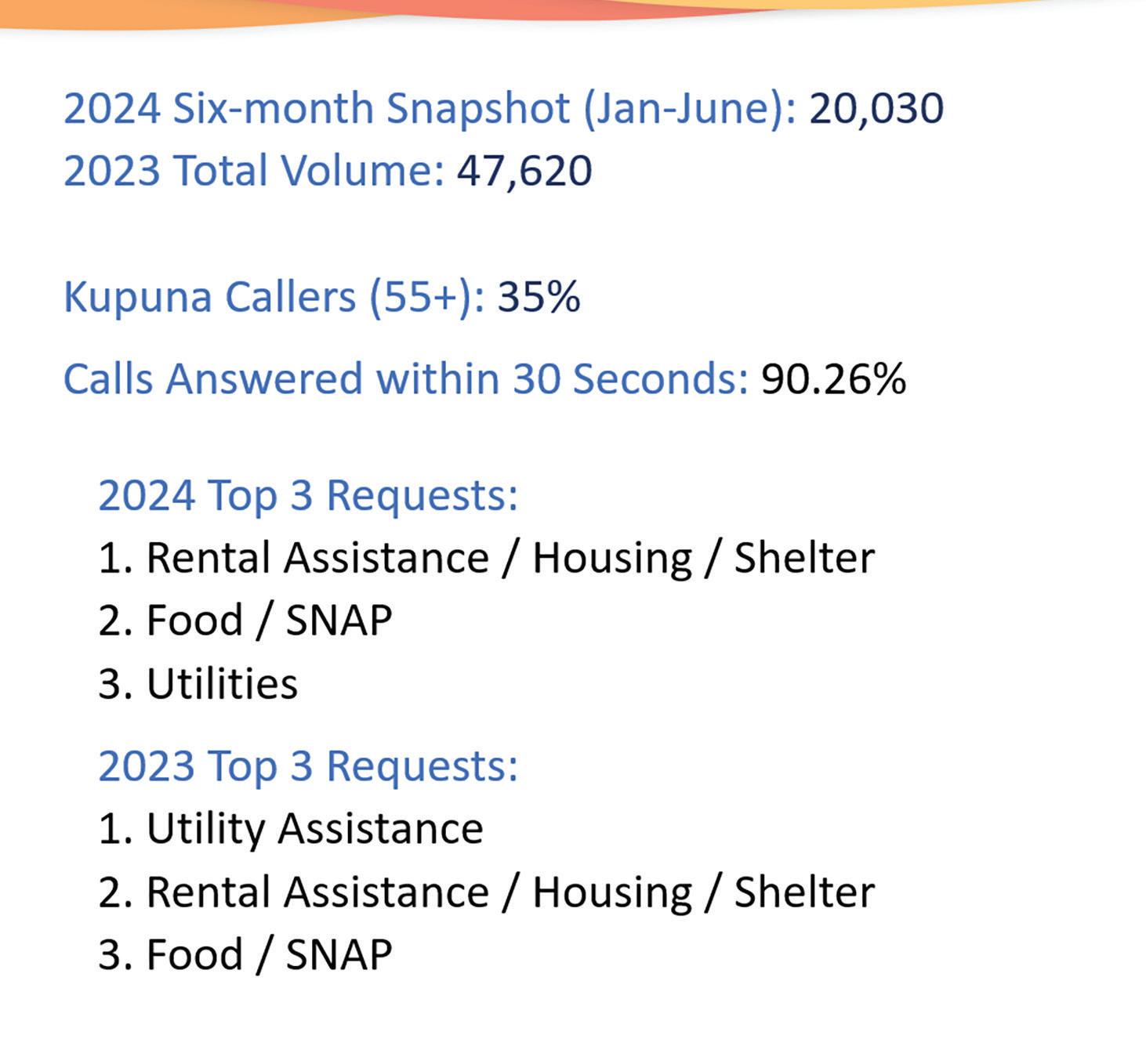
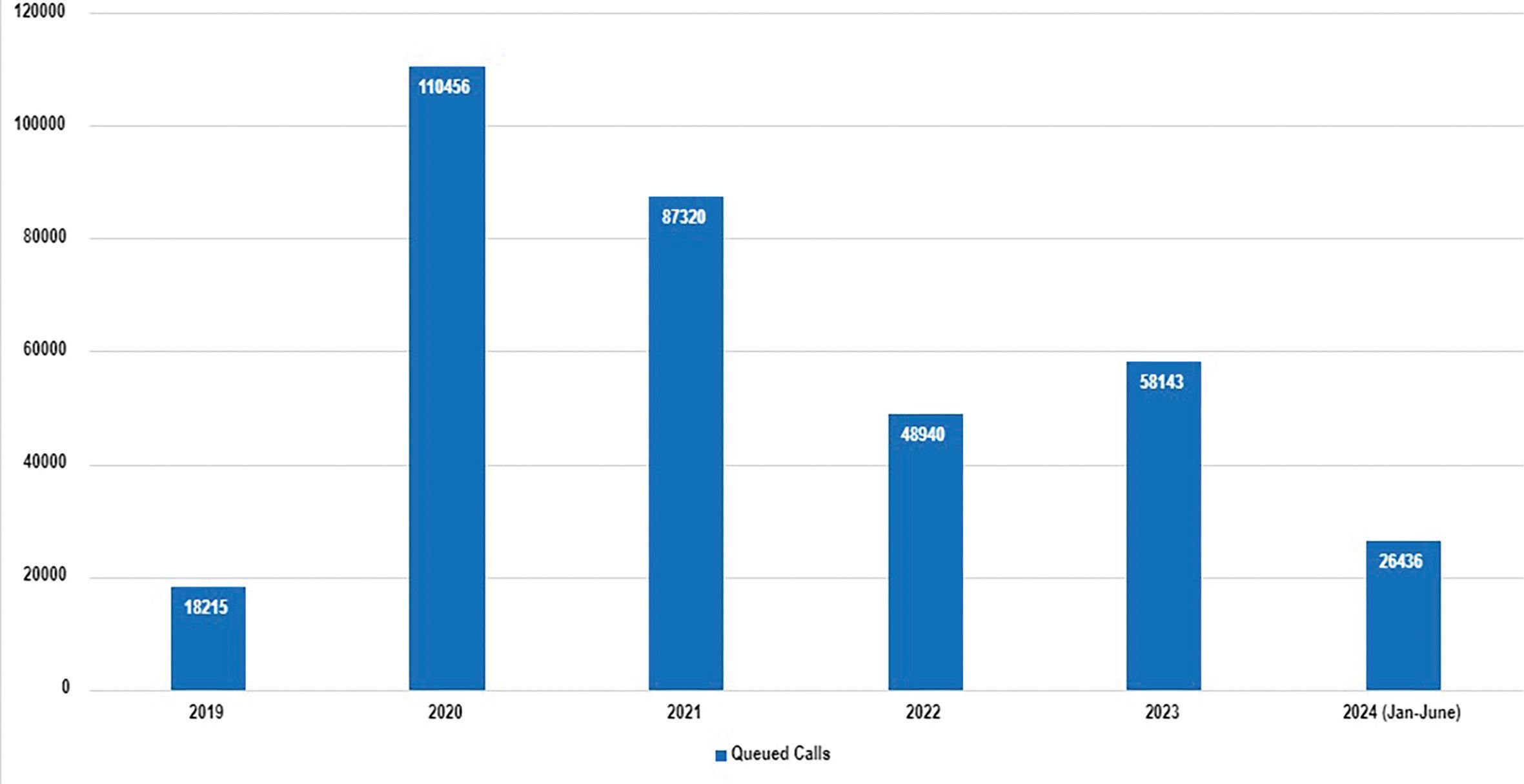
standard bearer for information about families and financial plight in Hawai‘i. The governor uses it in his State of the State. The mayor uses it in his State of the City.”
Fink says another important AUW role is as a filter, ensuring donations are used effectively. “We vet entities every year to make sure people know that when they give to these agencies, they’re not fly-bynight agencies,” he says.
Aloha United Way remains one of Hawai‘i’s largest charities. In Hawaii Business Magazine’s 2024 ranking of Hawai‘i’s Most Charitable Companies, AUW was fourth among charitable organizations in the state as ranked by 2023 donations and revenue. The first three were, in order, Hawai‘i Community Foundation, University of Hawai‘i Foundation and Kamehameha Schools.
However, AUW was once Hawai‘i’s fundraising powerhouse. For example, the Honolulu Advertiser reported in 1991 that AUW raised $18.1 million in 1990 – $44 million in today’s dollars. AUW raised $13.4 million in 2022 and $17.5 million in 2023.
The Hawai‘i Community Foun-
dation is now the state’s fundraising powerhouse. It’s 2023 fundraising total was $99.1 million. In 1990, the Honolulu Star-Bulletin reported that grants from HCF totaled $3 million – a record amount back then for the foundation – and that another $6 million in grants came from independent foundations that HCF worked with.
When Fink was interviewed, he said he planned to retire as AUW’s CEO at the end of 2024 but would
continue to support the community. And he offers these words of encouragement to the many people in Hawai‘i who help others.
“Sometimes all the stuff that goes on in our society can feel overwhelming, but if you’re giving of your heart as a volunteer or donor – even though you’ve got your own issues to deal with – you’re helping make a difference. I think that’s one of the reasons we’re all here on the planet is to help make a difference.”



BY SHELBY MATTOS
“MOKU
INSTEAD OF WAITING FOR HOLLYWOOD TO COME UP WITH ANOTHER FILM OR TV PROJECT FOR THE ISLANDS, KAWIKA HOKE AND HIS PARTNERS CREATED THEIR OWN.
All six episodes of the first season of “Moku Moku,” a halfhour comedy that follows three friends on Maui, aired on local TV station K5; the shows are currently streaming on Amazon Prime’s pay-per-view service and can be viewed for free, with ads, on Tubi. The second season is now being filmed on Maui. The show is produced by Laulima Studios, a Maui-based entertainment company launched in 2024 by Hoke, Jonathan Melikidse and Brad Starks. Hoke says Laulima Studios’ main goal is to prove Hawai‘i can produce films, TV shows and more, with local camera operators, directors, producers and all the other talent needed.
Hoke says Hawai‘i doesn’t have a huge platform, like shows produced in Hollywood. “We’re connected,” though, he says. “It’s a small enough industry where we’re all hopping over to each other’s shows, but there’s never been a need to band together, because we were kind of fixated on California.”
He looks to the global popularity of South Korean music, movies and fashion as inspiration for how to market a region’s talent internationally. Hawai‘i has a
large talent pool, Hoke says, but struggles to keep creatives in the industry because they don’t get enough work.
“Hawai‘i makes hammahs every day. We are a hammah factory,” he says, using the newschool pidgin for hardworking and talented people. “We have a problem going on with Hollywood. … They don’t think that Hawai‘i has really good camera operators because of many misconceptions about who gets hired.”
He describes a catch-22-like situation: When big movies get filmed in the Islands, few local people are hired. The thinking is that they lack experience, so instead of pulling from Hawai‘i’s talent pool, producers fly in a lot of mainland professionals. If more local people were hired to work some of the smaller projects in the Islands, they’d eventually have the experience needed to move on to bigger projects. But that’s not happening either.
Hoke says his passion for organizing a Hawai‘i-based film industry and talent pool derives from his background. He grew up on the mainland, where both he and his family worked hard to stay connected to their Hawaiian identity. And as a son of engineers, he was taught to think outside the box to get things done.
The three founders of Laulima Studios met on the sets
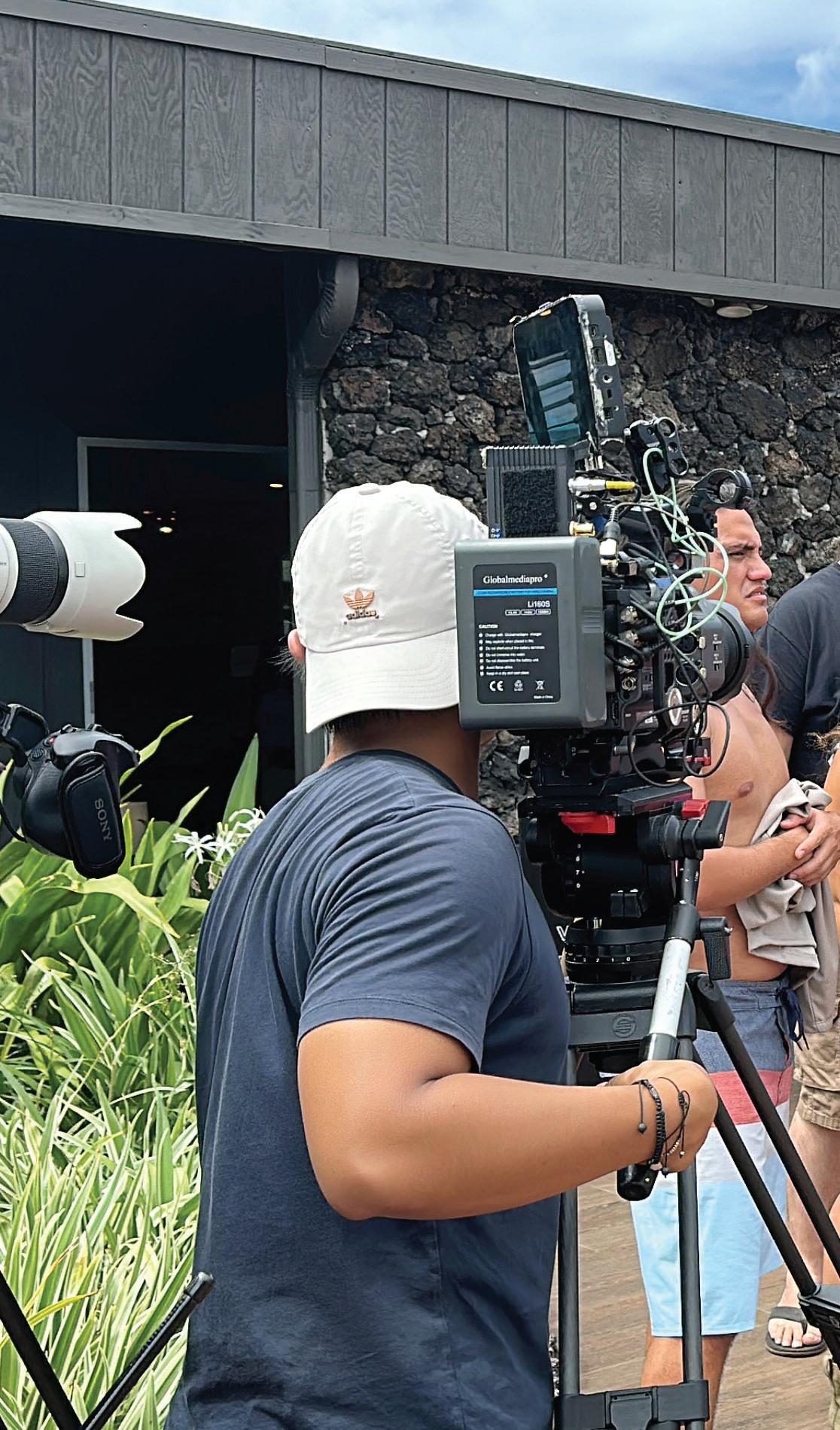
of independent projects on Maui. They talked about how Maui and Hawai‘i film creatives lack the competitive edge that is commonplace in Hollywood and other centers of entertainment. “That’s the other thing: A lot of artists don’t like being salesmen,” Hoke says.
“From a business standpoint, our studio is looking to do everything we can to give back to the community, as far as opportunity, as far as creating quality content that’s not just going to go straight to video and never heard of again. We really want to feed the next generation. We really just want to be useful.”
Starks says big-budget movies set in Hawai‘i typically have the same storyline: a long-term couple arrives, checks in at a high-end resort, they drink their weight in mai tais and they don’t go out.
“They, in short, don’t deal with the local community and people like us who live in Maui or Upcountry Maui, where our television show is placed,” Stark says. “They overhear the local population” instead of mingling with it.


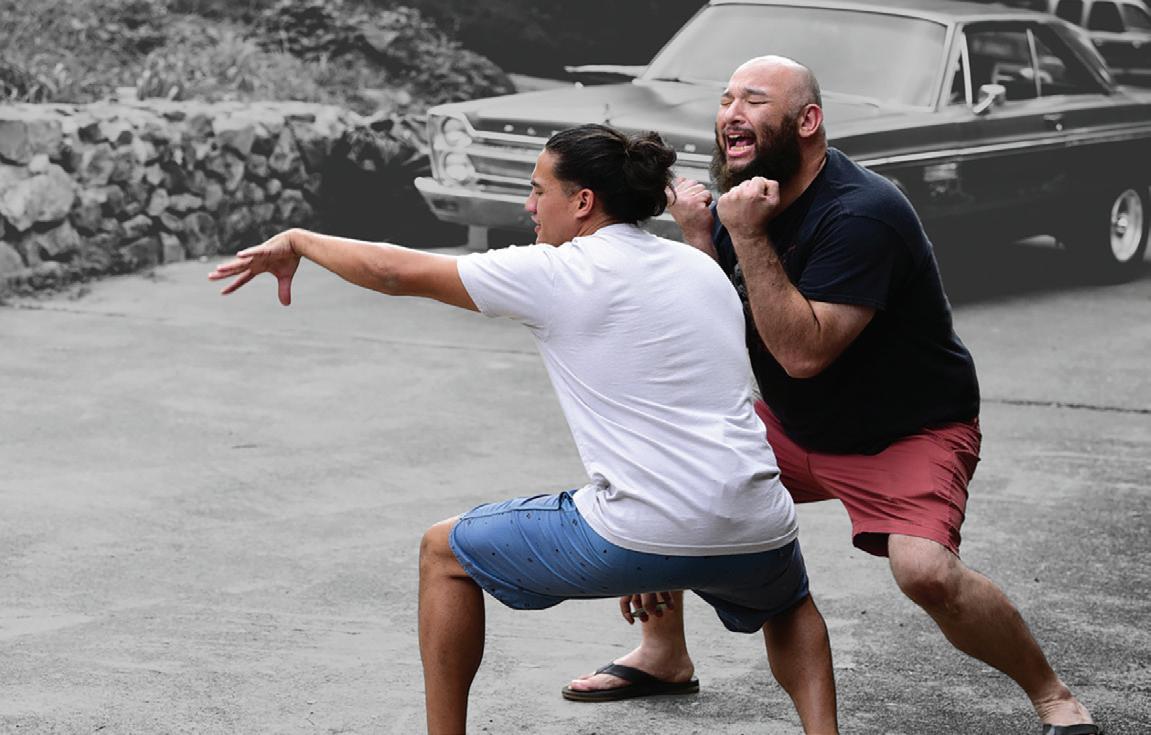
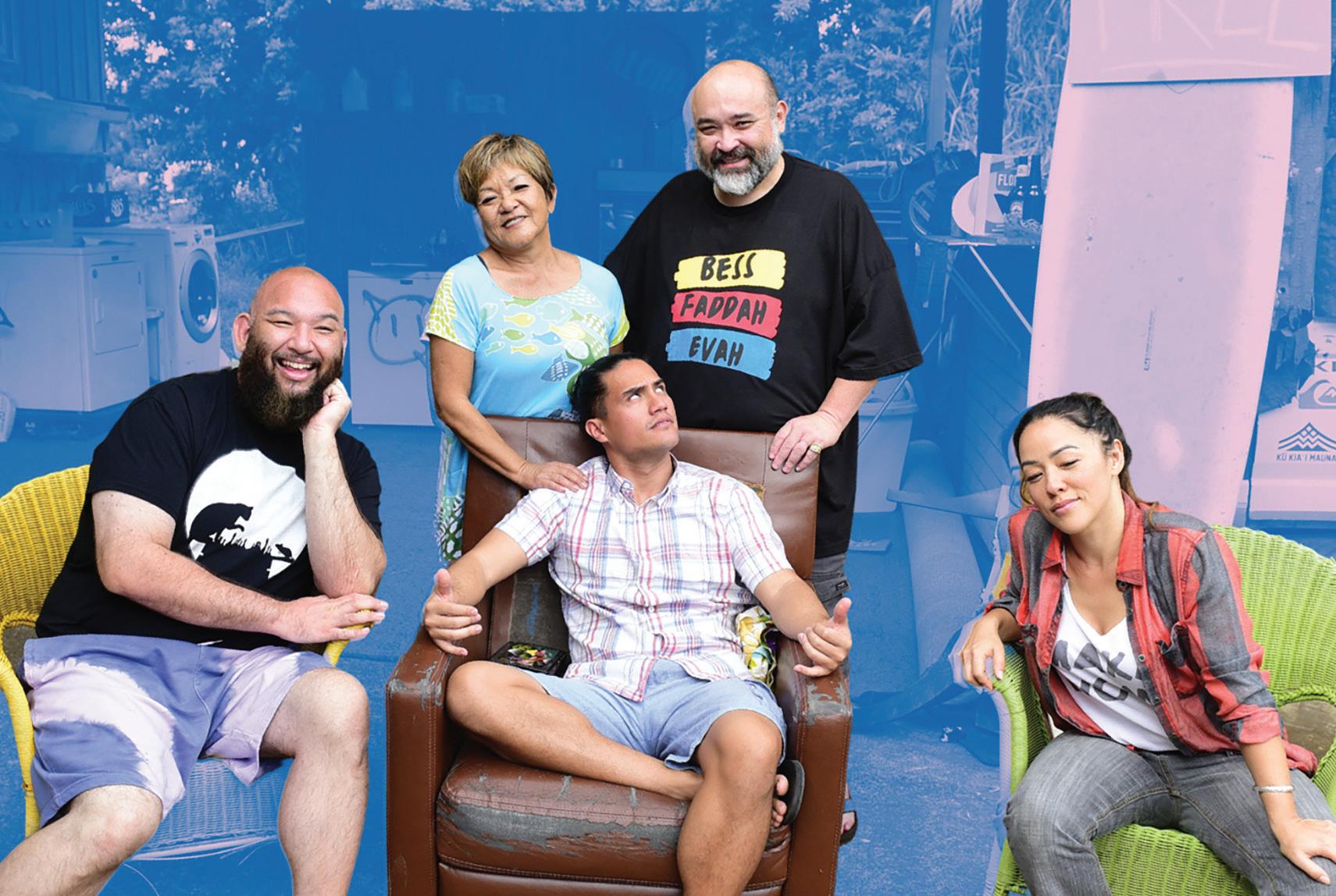

CEO JOE SPRAGUE TALKS ABOUT AIRFARE PRICES, THE FUTURE OF NONUNION EMPLOYEES, INTERISLAND FLIGHTS, AND MAINTAINING THE HAWAIIAN BRAND WHILE COORDINATING WITH ALASKA AIRLINES ON FLIGHTS, REWARDS PROGRAMS AND CUSTOMER SERVICE
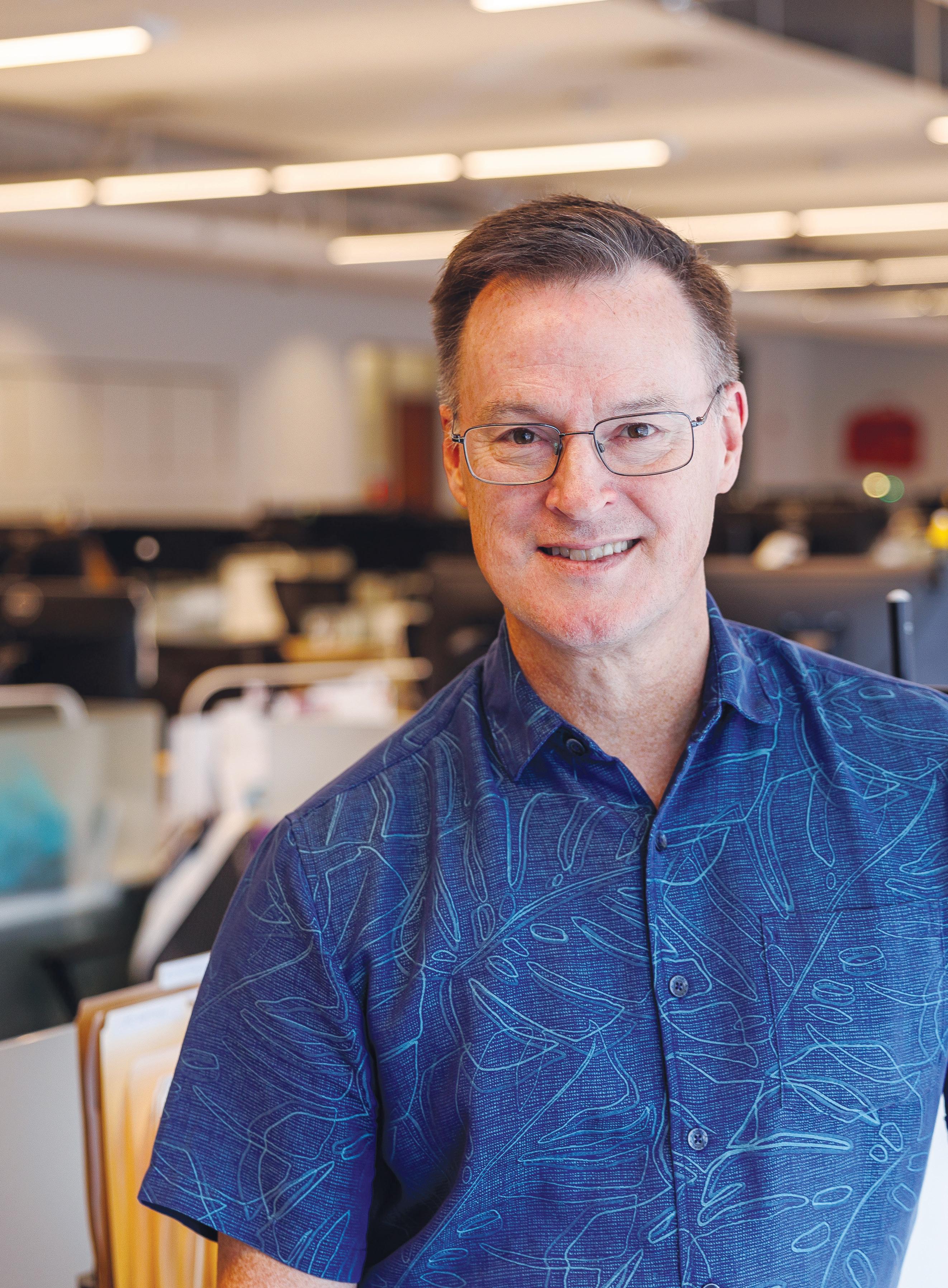

JOE SPRAGUE SAYS THE FIRST PLANE HE BOUGHT WAS A HAWAIIAN AIRLINES JETLINER, with an early version of Pualani on the tail. Back then, Sprague was a kid whose favorite toy was a mini airport, and he says that adding the model Hawaiian plane gave him great joy. Today, as the new CEO of Hawaiian Airlines, he feels honored to help lead the next stages of its consolidation with Alaska Airlines.
Sprague has been with Alaska Airlines for two decades, most recently as president of the company’s Hawai‘i/ Pacific region, and has led integration planning since the Alaska-Hawaiian combination was announced in December 2023.
In our 40-minute interview, he talked about many topics, including the future of Hawaiian Airlines’ employees, interisland flights and maintaining the Hawaiian brand while coordinating flights, rewards programs and customer service with Alaska Airlines. The interview has been condensed and lightly edited for clarity.
My first question arose from a report out of Dallas that Southwest Airlines will reduce its flights between Honolulu and the Neighbor Islands starting in April.
Q: WHAT ABOUT FUTURE CUTS IN NEIGHBOR ISLAND SERVICE?
We’ve said we’re going to maintain significant Neighbor Island service. That is our commitment to Hawai‘i as part of this combination between Hawaiian and Alaska. In any sort of market-type situation, we have to respond to demand patterns. But we’re comfortable with the level of demand right now, and I think the level of service that we have today will continue.
Q: WHAT ABOUT PRICING? BEFORE SOUTHWEST ENTERED THE INTERISLAND MARKET, HAWAIIAN’S PRICES WERE HIGHER. We’re certainly sensitive to the affordability of Neighbor Island travel, and we will continue to keep a close eye on fares and the other costs of traveling
between the islands. It’s a big reason we introduced the new Huaka‘i by Hawaiian program – to acknowledge the long-standing relationship between residents of Hawai‘i and Hawaiian Airlines and to make interisland air travel more affordable. (Starting Jan. 8, each member of the program will get a free bag check-in on interisland flights.)
Another is offering a quarterly discount, either 10% or 20%. (Every three months, each Huaka‘i member is emailed a discount code for 10% off one Neighbor Island booking, either one-way or round trip. Hawaiian Airlines Mastercard members get codes for 20% off.)
Q: THE OFFERS ARE FOR INDIVIDUALS, SO EACH MEMBER OF A FAMILY SHOULD SIGN UP FOR THE PROGRAM?
Yes, absolutely. And there’ll be other discounts each quarter exclusive for members of Huaka‘i, including flights to the continent.
Q: YOU HAVE SAID THAT THE HAWAIIAN-ALASKA MERGER WILL IMPROVE YOUR EFFICIENCIES AND LOWER COSTS. HOW WILL LOCAL RESIDENTS BENEFIT FROM THOSE EFFICIENCIES AND LOWER COSTS? One way is the combination of the two networks. Residents of Hawai‘i will have three times the number of destinations across North America that they can access from Hawai‘i on a single airline. When it was a stand-alone, Hawaiian Airlines flew to certain places on the continent, but not that many and not many that extended beyond the West Coast. Alaska Airlines, on the other hand, flies to over 100 destinations across North America.
The next big benefit is the evolved loyalty program. Already, Hawaiian miles members can transfer miles into an Alaska mileage plan account, and vice versa. Then over the next several months, we will further enhance the loyalty benefits, all sort of culminating in a single combined loyalty program – still a mileage-based program, the only one left in the industry.
Another benefit is Alaska’s preexisting membership in the One World airline alliance that Hawaiian will now also be
part of. That alliance includes British Airways, Japan Airlines, Cathay Pacific, American Airlines, Qantas and Iberia. Some of the top airlines in the world.
Q: WHAT ELSE IS AHEAD FOR 2025?
Behind the scenes, we’ll work on major integration projects. For instance, both airlines had hundreds of IT systems; we’ll need to blend those systems, and you can’t do it overnight. One of the biggest is what’s called the passenger service system – PSS for short – sort of the central nervous system for anything, from a technology standpoint, that touches the customer, starting from when a customer calls the reservation center or logs on to the website to book a reservation, change a reservation, upgrade a seat, check in for a flight on the mobile app or at an airport kiosk. Anytime two airlines combine, one of the most critical aspects is to get to a combined passenger service system so the guest experience is as seamless as possible.
We’re going to maintain the Hawaiian Airlines brand forever and the Alaska brand as well, so there will always be a hawaiianairlines. com website. Same thing on the Alaska side, but ultimately there will be a common platform behind that branded cover that is powering all of the technology.
Some people have said, “The Hawaiian Airlines app is fine, but it lacks functionality that a lot of other airline apps have, including the Alaska app.” Well, when we get to a single passenger service system, we’ll be able to deliver a single and much more robust customer technology experience to everybody.
Q: THERE ARE A LOT FEWER PEOPLE HERE THAN THE LAST TIME I WAS AT HAWAIIAN’S HEADQUARTERS. HOW MANY OF THE 1,400 NONUNION EMPLOYEES WILL BE LEFT AFTER THE INTEGRATION IS FINISHED?
The first thing to acknowledge is what an incredibly talented,
professional and resourceful group of employees Hawaiian Airlines has here in Hawai‘i, both front-line, union-represented employees and noncontract or management employees here at the main office. I feel very fortunate to work with them and learn from them.
On the flip side, as we come together with Alaska, there is redundancy in some management or leadership functions. We’re trying hard to set up this combined entity for maximum success and sustainability for the long term. That is something we believe is ultimately in the best interest of our customers, our owners and also the employees who are part of the going-forward combination.
What we have shared since the deal closed is that the vast majority of the 1,400 noncontract or management employees at Hawaiian Airlines have received interim offers for 12 months or beyond to one of the big integration milestones, such as the completion of the single passenger service system that we talked about. And then there’s also a relatively large number that have already received long-term, permanent offers to stay with the airline.
Over the next year to year and a half, we’ll work through what are the ultimate needs of the combined airline. The reality is there will be a smaller number of noncontract and management employees here, but there will still be several hundred headquartered here in Honolulu. Our intent is to maintain a regional headquarters in Honolulu in perpetuity. And that makes sense because Honolulu, I’m sure, will always be the second-largest hub in the network, behind only Seattle.
We will always maintain a very large pilot and flight attendant crew based in Honolulu. We’ve got a fantastic, relatively new hangar that we intend to continue to use for aircraft maintenance. And, of course, at the second-largest hub, the volume of airport employees will always be significant. Similarly, in the Neighbor Islands as well.
“
WE’LL HAVE A BRAND EXECUTION PLAYBOOK THAT SAYS, ‘THESE ARE THE HAWAIIAN SIGNATURE ELEMENTS. THOU SHALT NOT MESS WITH THEM.’ ”
– JOE SPRAGUE CEO, HAWAIIAN AIRLINES
So we’re going to have several thousand employees here, and we’ll need a sizable regional headquarters team and leadership team to support those front-line employees.
And we feel very strongly about continuing to support the community through a number of community outreach activities.
Q: AND CONTINUE THE HAWAIIAN AIRLINES BRAND?
Yes, No. 1, I want to reinforce the intent of the company to maintain the Hawaiian Airlines brand. The brand is very strong, both for bringing visitors to Hawai‘i and serving the residents of Hawai‘i. Long before we consummated the deal, Alaska’s leadership, starting with CEO Ben Minicucci, was emphatic that we would keep the brand. Two brands in one company – that’s not been done before in the U.S. airline industry, so we’re creating a playbook for what that will look like, whether it’s the website or apps, or everywhere else the branded experience plays out.
We’re keeping Pualani on the tail of the planes but we’re also looking
inside at the onboard experience: the flight attendants, food and beverage, in-flight entertainment. What are the signature elements of that branded experience? We’re defining those very purposefully now so they can be retained as we move forward. And we’ll have a brand execution playbook that says, “These are the Hawaiian signature elements. Thou shalt not mess with them.” And the same on the Alaska side.
Q: I FEEL YOUR ENERGY AND EXCITEMENT TO BE IN THIS ROLE.
I feel honored to be in this role. I’ve been with Alaska for a long time, so I was part of the merger conversations in their earliest form. I have spent a lot of time in Hawai‘i; my first flight on Hawaiian Airlines was in 1998 and many times since, so I’ve had this affinity for Hawaiian Airlines. Not every airline can lay claim to having a distinct sense of purpose. I’ve always
felt that Alaska does because of its role in the state of Alaska. And that first time I flew Hawaiian Airlines, I realized Hawaiian Airlines has that same sense of purpose. That sense of purpose is naturally energizing.
Q: WHAT IS YOUR SENSE OF TOURISM TRAFFIC BETWEEN HERE AND THE MAINLAND IN 2025?
We want to stay engaged in the conversation that’s happening here in Hawai‘i about what the right level of visitor traffic is. And we feel an important role in introducing this special place to visitors.
We want the combined airline to be as efficient as possible. We’re looking at where Alaska and where Hawaiian are flying to Hawai‘i and how can we optimize that. If Alaska has a flight that departs from someplace in California going to Maui and Hawaiian has the same flight leaving 20 minutes later – is that
the most efficient way to serve the market? So we might offer the same number of seats, but spread them out by several hours.
We’ll pay close attention to demand, but there are parts of the visitor traffic to Hawai‘i that are still at depressed levels. Maui still has a ways in its recovery, and Japanese visitor traffic is still down significantly, and there’s a similar impact on Australian visitors. I think we’re hoping for continued recovery to previous levels before we think too much about … some new norm that would be higher than that.
Alaska Airlines has operated freighter aircraft serving mainly Seattle to the state of Alaska for many years. Hawaiian Airlines has more recently gotten into freighter aircraft as well. But even on the passenger aircraft, there’s plenty of opportunity to more efficiently serve cargo demand, maybe with more wide-body jets.
After my interview with Sprague, Alaska Air Group announced that starting in May it would use Hawaiian’s wide-body Airbus A330-200 aircraft that currently fly daily between Honolulu and Tokyo’s Narita airport to instead fly daily nonstop between Seattle and Narita.
And in October, Alaska said, Hawaiian Airlines planes will start a Seattle to Seoul service, though Hawaiian’s current Honolulu-Seoul service will be unaffected.
Interestingly, Alaska says it will use Hawaiian branding on those transpacific flights even though they do not go through Hawai‘i airports. Of course, the flights don’t go through Alaska either. Will the combined airline use the Hawaiian brand on other non-Hawai‘i flights?
The air group also said it would increase flights between Honolulu and Tokyo’s Haneda airport from 12 to 14 a week.
Starting in late March, the air group also said it will offer these additions on Hawai‘i routes:
• 20% more seats between Seattle and Honolulu, with three of its six daily nonstop flights from Seattle to Honolulu on wide-body Hawaiian aircraft.
• Three daily nonstops with a 25% increase in available seats between Honolulu and Portland.
• Mid-morning and late afternoon departures from San Diego to Maui instead of just morning departures, and new-
ly timed mid-afternoon and red-eye departures from Maui.
• Three more overnight flights to the West Coast: Honolulu and Maui to Portland, and from Honolulu to San Francisco.
Alaska said the restructuring means more flight time for Hawaiian’s flight crews.
“We’ve increased the number of hours Hawaiian’s Boeing 787-9 and Airbus A321 aircraft fly daily. This means more flying time for Hawaiian’s crews and more union jobs. The A321s will fly 25% more than they did before. This strategy mitigates the impact of delayed Boeing 737 deliveries while enabling us to expand our overall network reach.”
– Steve Petranik


NOTHING SEEMS PARTICULARLY REMARKABLE ABOUT CAMELINA, A SMALL, WISPY PLANT THAT FLOWERS IN MEADOWS ACROSS NORTH AMERICA AND EUROPE. Yet it’s full of surprises.
When cultivated, camelina acts as a fast-growing cover crop that can be rotated with crops such as onions and watermelons. The plant’s rows of tiny, hard seeds are packed with oil, which has been used in lamps and kitchens for millennia. After the oilseeds are extracted from their pods and crushed, what’s left behind is a protein-rich seed cake for feeding livestock.
In recent years, another novel use has emerged: Camelina oil works as a feedstock, or raw material, for creating biofuels – a potential pathway to more energy independence and resiliency in Hawai‘i.
The oil can be processed into biodiesel to power electrical plants, renewable naphtha for gas companies and – maybe most surprising of all – sustainable aviation fuel for long-haul flights. And camelina-based biofuel has another unexpected advantage: It can be added directly into the fuel tanks of planes and vehicles, with no modifications required.
In September 2024, the first North American flight using camelina-based fuel – Delta 2732 – traveled from Minneapolis to New York City, a milestone in the push to turn this low-carbon energy source into a viable alternative to petroleum-based jet fuel.
In Hawai‘i, the work of creating a camelina-to-fuel ecosystem is being led by the Par Hawaii refinery, the private land-management company Pono Pacific, and leaders of the newly merged Hawaiian and Alaska airlines. These large companies are joined by a growing coalition of farmers, ranchers and others.
“Biofuels have to be part of the mix here,” says Eric Wright, president of Par Hawaii. “They have to be part of the airlines decarbonizing, and they’re part of HECO’s integrated grid plans for getting to zero percent carbon. … This is really our best chance to have those fuels locally produced.”
CROP TRIALS AT MAHI PONO FARM IN CENTRAL MAUI ARE TESTING DIFFERENT VARIETIES OF CAMELINA, A COVER CROP. HERE, YOUNG CAMELINA PLANTS HAVE REACHED THE FLOWERING STAGE. WHEN THE FIELD STARTS TURNING BROWN, THE PLANTS’ OIL-PACKED SEEDS ARE READY FOR HARVESTING.

Work to add renewables and to decarbonize buildings, transportation and industries has steadily advanced since 2015, when Hawai‘i passed legislation that calls for all of its electricity to come from renewable energy by 2045. That was followed in 2018 by a first-inthe-nation bill that aims to reach 100% carbon neutrality by 2045.
Nearly 20% of Hawai‘i’s electricity now comes from solar power, for instance, much of it generated from rooftop panels. And by late 2024, the state had more than 34,000 registered electric vehicles, a 23% increase from the year before, according to the Hawaii EV Association.
Despite concrete steps to move away from fossil fuels, petroleum continues to dominate Hawai‘i’s energy mix. Petroleum accounts for about 80% of the energy consumed in the state, the highest percentage in the country, according to recent data from the U.S. Energy Information Administration.
Hawai‘i’s transportation sector uses almost two-thirds of all petroleum consumed, with jet fuel
“ THE ELECTRIC GRID REALLY NEEDS FIRM RENEWABLE FUEL THAT YOU CAN PUT IN A TANK AND STORE, AND IT’S THERE WHEN YOU NEED IT.”
– ERIC WRIGHT PRESIDENT, PAR HAWAII
AVERAGE TOTAL OF 44.38 MILLION BARRELS IS CONSUMED
TOTAL IS MORE THAN 100% DUE TO ROUNDING. AVERAGES ARE FROM 2015-2020. SOURCE: U.S. ENERGY INFORMATION ADMINISTRATION. TO RETRIEVE, GO TO ENERGY.HAWAII.GOV/ENERGY-DATA AND SEARCH FOR “PETROLEUM USE BY SECTOR.”
accounting for nearly half of the petroleum products used in the state.
In 2022, a major step toward weaning the state off petroleum occurred. Crude-oil refinery Par Hawaii committed $90 million to convert a distillate hydrotreater at its Kapolei facility into a renewable hydrotreater that produces biofuels. The blessing ceremony for the renewable unit took place in late November, with a finish date anticipated in fall 2025.
This giant processing unit – a maze of undulating metal pipes and tanks encased in a web of scaffolding and stairs – will take organic feedstock, such as camelina oil, and alter it using hydrogen and a catalyst at high temperature and pressure. What comes out has a hydrocarbon makeup similar to petroleum products, making it an efficient “drop-in” fuel.
When the renewable hydrotreater is running, Wright says the unit
will produce 60 million gallons per year of sustainable aviation fuel for airplanes; renewable diesel for ships, cars, trucks and power generation; and renewable naphtha, which can be blended with regular gasoline or used to produce synthetic natural gas.
When the least carbon-intensive practices are used – such as growing camelina feedstocks on Kaua‘i, refining them in Kapolei and pumping the fuel into planes at the Honolulu airport – products such as sustainable aviation fuel reduce greenhouse gases by up to 80% compared to petroleum-based jet fuel, according to global trade group International Air Transport Association.
Two huge, green storage tanks for renewable feedstocks have been added to Par’s facility, ready for the transition. The company plans to import cooking oils and fats as feedstocks while local camelina production launches and expands enough to offset imports.
The 60 million gallons of locally produced biofuels will add to the growing U.S. supply. At the start of 2024, refineries were producing 24 billion gallons of biofuel per year – a 7% jump from 2022, according to the U.S. Energy Information Administration. Much of the increase comes from growth in renewable diesel and naphtha production, along with a new push to produce sustainable aviation fuel.
All told, biofuels will make up about 5% of overall production at Par’s refinery, says Wright; for context, the facility can currently process about 94,000 barrels of imported crude oil a day. In the future, more areas of the plant might be converted to produce biofuels, he says.
Liquid biofuel has a distinct advantage over solar and wind power in that it’s a “firm” energy source that stabilizes the electric grid when the sun is obscured


ERIC WRIGHT, PRESIDENT OF PAR HAWAII, IN FRONT OF TWO GREEN STORAGE TANKS FOR RENEWABLE FEEDSTOCKS. ONCE THE $90-MILLION HYDROTREATER CONVERSION IS COMPLETED IN FALL 2025, FEEDSTOCKS SUCH AS CAMELINA OIL WILL BE TURNED INTO BIOFUELS AT THE KAPOLEI REFINERY.
or the wind stops blowing, says Wright. As he describes it, a gallon jug of renewable diesel fuel can produce 20 times more energy than what’s stored in a similarly sized lithium-ion battery.
“The electric grid really needs firm renewable fuel that you can put in a tank and store, and it’s there when you need it,” says Wright.
In Honoka‘a on Hawai‘i Island, the Hamakua Energy power plant runs on both imported fossil fuels and renewable fuel supplied by Pacific Biodiesel, which processes discarded cooking oils at its Kea‘au refinery and produces about 6 million gallons of biodiesel annually.
By the end of 2030, Hamakua Energy plans to shift to 100% renewable fuels and create a “closed-loop system in Hawai‘i,” says Marcelino Susas, VP of strategy and business development at Pacific Current, a subsidiary of plant owner Hawaiian Electric.
Like Wright, Susas says biofuels make the grid more stable while also buffering the state from fluctuating crude-oil prices. “I think if you’re self-sufficient, you’re not so exposed to the shocks that you have with imported fuels, as we’ve seen in the last few years,” he says.
At Pono Pacific’s Downtown Honolulu headquarters, a vial of thick, golden liquid sits on Chris Bennett’s desk. The bottom of the glass container is lined with bits of organic debris, the refuse left behind after crushing camelina seeds with a store-bought press. While the oil is just a sample, it could go straight to Par for processing when the new unit is ready.
Bennett is the VP of sustainable energy solutions at Pono Pacific, which works with conservation man-

agers and landowners to improve their farming operations, protect ecosystems and watersheds, and manage conservation lands, among other services.
Since joining Pono Pacific in 2023, after practicing as an environmental lawyer, Bennett has been in charge of the camelina project, including working with landowners and overseeing crop trials.
With the help of researchers at the Hawaii Agricultural Research Center in Waipahu, Pono Pacific is testing dozens of varieties of non-GMO camelina at different elevations and conditions, mostly at the state’s largest farms: Mahi Pono, a 41,000-acre farm and ranch in Central Maui, and Aloun Farms, which has about 3,000 acres in ‘Ewa and Central O‘ahu and operations in Kaumakani on Kaua‘i.
So far, Bennett says the results are promising. On the mainland, camelina, known as a short-season crop that needs little water, has an



CAMELINA IS HARVESTED ONCE THE PLANT HAS DRIED. THE TINY SEEDS EXTRACTED FROM THE PODS, BOTTOM RIGHT, ARE MADE UP OF ABOUT 40% OIL. THE OIL WILL BE PROCESSED AT PAR HAWAII’S RENEWABLE HYDROTREATER, SCHEDULED TO OPEN IN FALL 2025, AND TURNED INTO BIOFUELS.


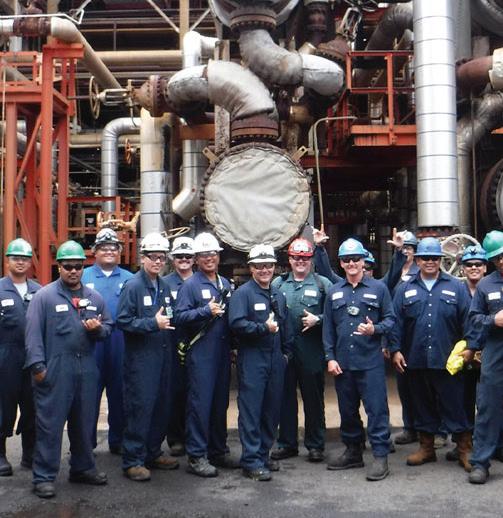

average seed-to-harvest cycle of 80 to 100 days. In local crop trials, it’s 60 to 75 days.
“In Hawai‘i, you have the potential to do two or three rotations of camelina a year, instead of just one,” says Bennett.
Initial trials are generating between 1,000 and 2,000 pounds of oilseed per acre. The baseline yield needed to be economically feasible is 1,200 pounds per acre, says Bennett, with some test yields far exceeding that.
But there’s still lots of work to be done, says Kyle Studer, who, as the row crop operations manager at Mahi Pono, is in charge of about 1,000 acres, as well as the farm’s camelina trials.
The first trial in July using generic camelina seeds was disappointing, says Studer, as high levels of sunlight and heat caused the plants to flower too soon, stunting the oilseeds’ growth. The next round will be planted in cooler conditions, in December, and will use more selective varieties of seeds.
A former independent farmer in Hawai‘i and on the mainland, Studer says his “naturally skeptical” outlook helps him prepare for everything that could possibly go wrong. He sees a long road ahead before the team can pinpoint the most productive seed varieties, soils, climate, fertilizer and weed-management program to make camelina profitable, but he’s hopeful it can work.
Among the most enthusiastic camelina champions, says Bennett, are ranchers who struggle with the high cost of feeding their animals. Cattle owners generally rely on grass foraging, supplemented with hay that’s shipped in from the mainland, he says. The organic material left behind when the camelina seeds are extracted makes hearty animal feed.
He says camelina is also superior to the cover crops typically used by Hawai‘i farmers, such as sunn hemp, oats and barley. Rather than having to “plant it, grow it and mow it off,” Bennett says camelina is “a cover crop that you can make money off.”
For now, he says large operations with contiguous tracts of land would be best able to rapidly ramp up camelina production, and to reap its benefits. And these large farms often have marginal lands that could be productive again.
“They want to put the acreage back in use and they’re searching for the next big thing you can scale,” says Bennett. “If you can bring fallow land back on, and camelina is the driver for that, it’s also opening up that acreage for food production.”
For small farmers, he’s looking at “aggregation models” to give them access to harvesting equipment and crushing facilities for their camelina crops.
“Our plan, with Pono Pacific, is to demonstrate that this can be done,” says Par’s Wright. “If we can show that to farmers and tell them that we’ll buy all the oil they can produce, we think it can really blossom from there. … This could be an innovative way to kick-start the agricultural economy in Hawai‘i.”
Alaska Airlines says it has spent years on decarbonization efforts, including fine-tuning operations to use less fuel, updating its fleet with fuel-efficient planes, investing in new technologies, introducing a carbon-offset program and developing supply chains for sustainable aviation fuel.
At the moment, Ryan Spies, managing director of sustainability at the newly merged airlines’ Seattle headquarters, says sustainable aviation fuel, or SAF, is “a nascent industry” that accounts for less than 1% of the fuel used by airlines globally. Alaska is approaching the 1% mark, he says.
Though still a small factor, Spies views SAF as an increasingly important component in the aviation industry’s decarbonization efforts “for a long time, and maybe in perpetuity.”
As a drop-in fuel that’s blended with conventional jet fuel, “we don’t have to change out planes. We don’t
have to change the infrastructure at the airports. It’s a jet fuel at the end of the day, so it’s safe, it’s reliable and it performs over long distances,” says Spies.
The airline industry as a whole has been clamoring for more sustainable aviation fuel, with the International Air Transport Association pledging to reach net-zero carbon emissions by 2050. So far, demand for SAF far exceeds supply.
“Right now, it’s just not available in the quantities that we need or at the speed that we need,” says Spies.
But production is rapidly rising. In 2021, the federal departments of Energy, Transportation and Agriculture released a “SAF grand challenge,” with incentives to encourage companies to produce more fuel. Since then, SAF production and imports have grown from 5 million gallons in 2021 to 52 million gallons through the first six months of 2024.
“ THE REFINERY IS ALREADY THERE. THE AIRLINES ARE ALREADY THERE. THE FARMERS ARE SAYING, LET’S GROW IT. EVERYONE’S ON BOARD. WE JUST NEED THE STATE TO BE ON BOARD TOO.”
– NAHELANI PARSONS EXECUTIVE DIRECTOR, HAWAI‘I RENEWABLE FUELS COALITION
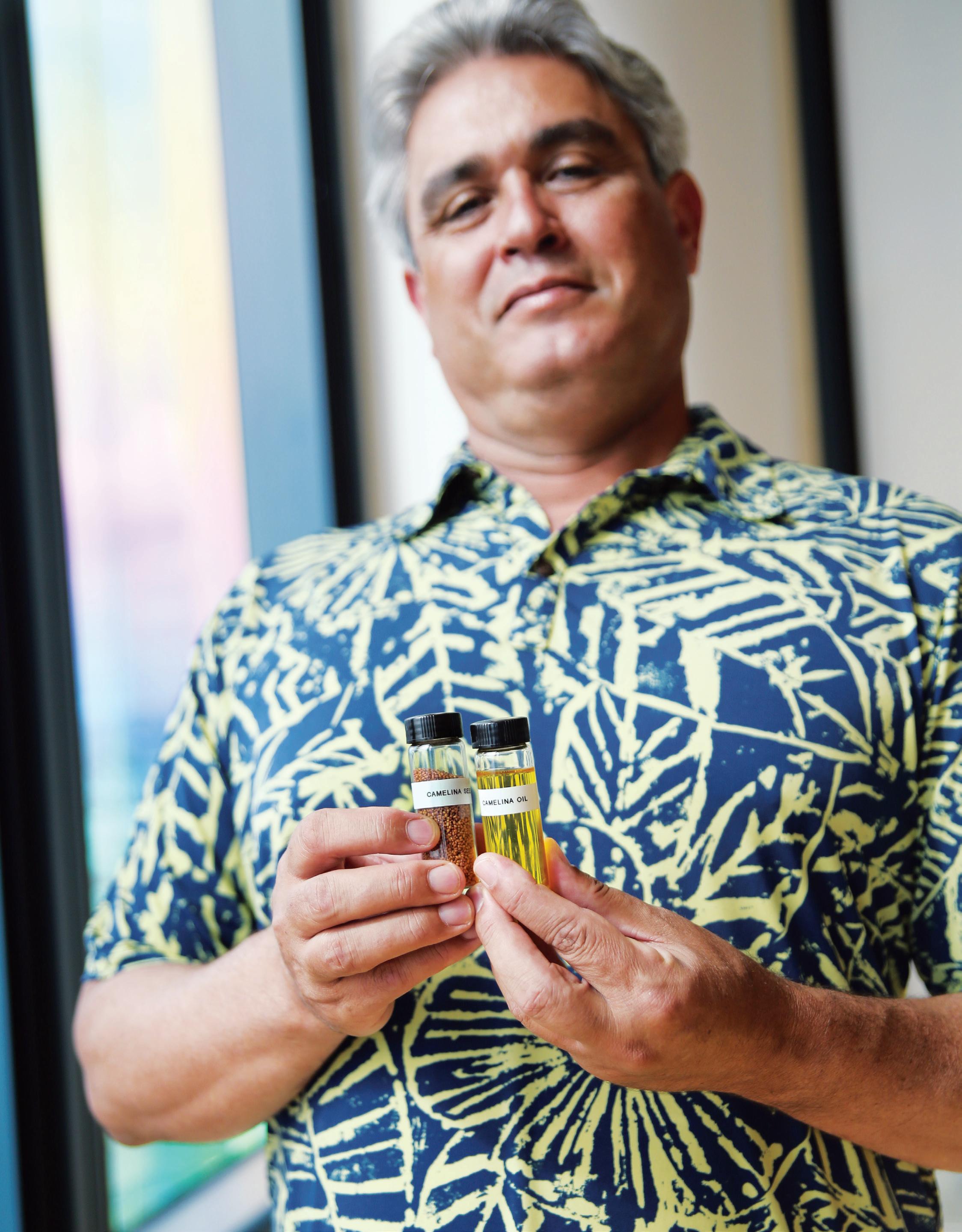
CHRIS BENNETT OF PONO PACIFIC HOLDS VIALS FILLED WITH THE CAMELINA PLANT’S TINY SEEDS AND THE OIL PRODUCED WHEN THEY’RE CRUSHED. TRIALS ARE UNDERWAY TO LOCATE THE MOST PRODUCTIVE VARIETIES OF CAMELINA FOR HAWAI‘I’S CLIMATE, SOIL AND OTHER GROWING CONDITIONS.

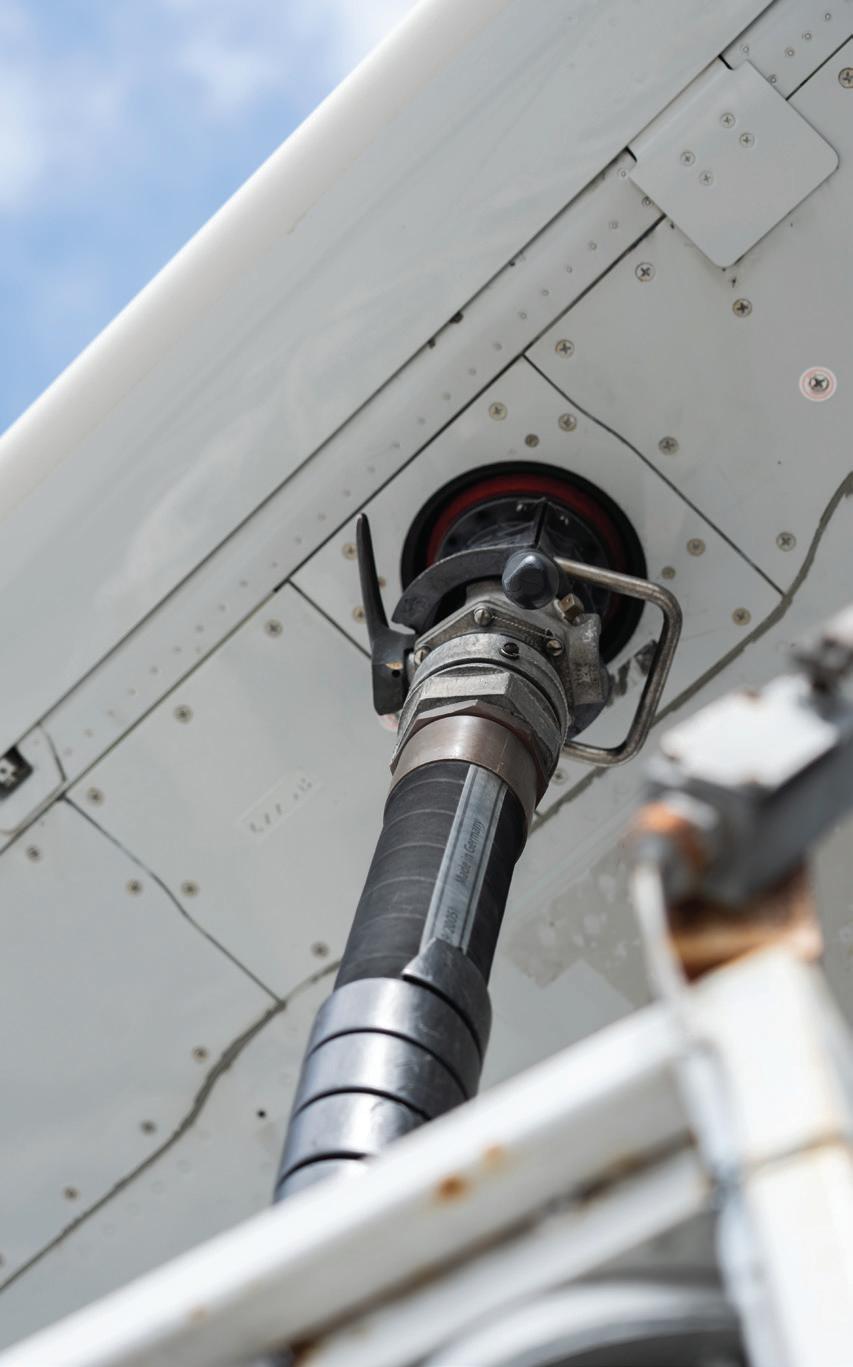
“ IF YOU CAN BRING FALLOW LAND BACK ON, AND CAMELINA IS THE DRIVER FOR THAT, IT’S ALSO OPENING UP THAT ACREAGE FOR FOOD PRODUCTION.”
– CHRIS BENNETT VP OF SUSTAINABLE ENERGY SOLUTIONS, PONO PACIFIC
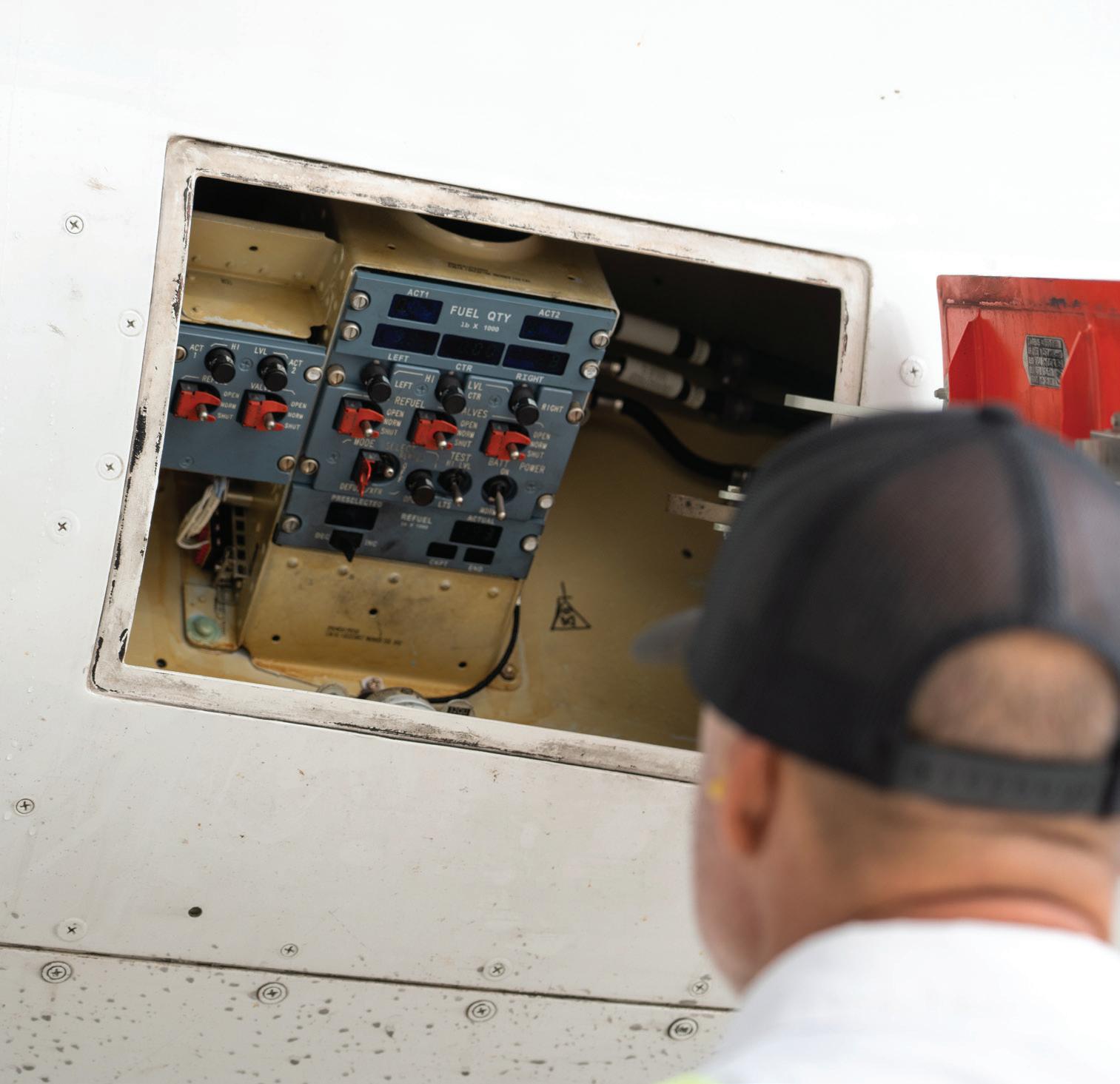
The intergovernmental coalition says that, based on announced projects, between 2.6 billion and 4.9 billion gallons per year of SAF is projected to be produced domestically by 2030, which meets the SAF challenge’s near-term goal.
Wright says that when the conversion of its hydrotreater is complete, Par expects to produce enough sustainable aviation fuel to replace up to 25% of Hawaiian Airlines’ fuel demand to and from the Islands. Par has worked closely with Hawaiian for years to launch its SAF production.
For context, Montana Renewables in Great Falls produces 30 million gallons of sustainable aviation fuel a year, making it the largest SAF producer domestically. According to the U.S. Energy Information Administration, the only other SAF producer at the start of 2024 was the World Energy plant in Paramount, California.
PAR EXPECTS TO PRODUCE ENOUGH SUSTAINABLE AVIATION FUEL TO REPLACE UP TO 25% OF HAWAIIAN AIRLINES’ FUEL DEMAND TO AND FROM THE ISLANDS. THE REFINERY WILL START WITH IMPORTED ORGANIC FEEDSTOCKS AND USE CAMELINA OIL GROWN IN HAWAI‘I AS PRODUCTION RAMPS UP.
Par’s expected SAF production will rival the Montana facility. But it faces a significant hurdle: The cost of producing sustainable aviation fuel, as well as other renewable fuels, is more expensive than petroleum products.
“We look at SAF as all-hands-ondeck because of the cost,” says Spies. “And any one individual airline, or even combined airline like us, can’t do it alone.”
To bridge the cost gap and help boost supply, which will eventually lead to lower costs, a reliable mechanism is being rolled out in states from Montana to Illinois to Nebraska: tax incentives.
When Par’s new hydrotreater begins producing renewable jet fuel, diesel and naphtha, the three


products will cost an additional $2 to $4 per gallon over conventional fuels, says Wright.
“That’s a significant cost difference, and you want to make those fuels competitive so the customer doesn’t have to pay a big premium to switch to low-carbon fuels.”
Federal incentives vary from $1 per gallon in income-tax credits for renewable diesel to about $1.75 per gallon for producing high-quality aviation fuel that reduces greenhouse gases by at least 50%. That lowers the overall cost, says Wright, and “gets you about halfway there.”
What’s missing are robust state incentives needed to make up the remaining cost difference. At the moment, Hawai‘i has a tax credit for renewable-fuel production, capped at $20 million a year, that’s run through the Hawai‘i State Energy Office.
But “it’s very minimal and it’s not fully utilized,” says Nahelani Parsons, executive director of the Hawai‘i Renewable Fuels Coalition, which formed in 2023 to advocate for more significant incentives.
Founding members Par, Hawaiian Airlines and Pono Pacific are joined by a growing list of others, including the Hawai‘i Farm Bureau, Kuilima Farm and Haleakalā Ranch.
The group’s first proposal in the 2024 legislative session failed, but it plans to return in 2025 with a revised bill that increases the cap in tiered stages instead of all at once, as originally proposed. In the bill’s current draft stage, the cap would increase immediately to $30 million in tax credits in 2025, rising each year until it hits $80 million annually in 2029, says Parsons. The draft proposal would also add per-gallon credits for locally grown feedstocks and fuel production, especially sustainable aviation fuel.
“The key is, if you look at other states, you have to have an economic incentive for the renewable fuels to stay here and be used here, which we have an incredible demand for. The airlines will use every last drop,” says Parsons.
The tax credit would be shared
among companies buying the renewable fuels, such as Hawaiian and Alaska airlines, Hawaiian Electric, Hawai‘i Gas, and the Kaua‘i Island Utility Cooperative, says Parsons.
“Even though we’re asking the state for funds … there’s very few other areas where the private sector has already put in $90 million,” says Parsons. “The state couldn’t do it at all if there were no local partnerships to convert to renewable. … The refinery is already there. The airlines are already there. The farmers are saying, let’s grow it. Everyone’s on board. We just need the state to be on board too.”
Wright hopes to sell the biofuels in Hawai‘i, but says tax credits are needed to make the economics work. Without them, Par plans to ship the fuel by company vessel to a sister refinery in Tacoma, Washington, and sell it to West Coast markets using their incentives. Washington, for instance, offers a substantial tax credit – up to $2 per gallon – for sustainable aviation fuel.
“We’d much rather keep it here at home,” says Wright. “Our business is to supply Hawai‘i’s fuel needs, and so we want to sell SAF to the airlines here, and renewable diesel and naphtha to our utilities.”
Nathan Hokama, a communications specialist who works with Par and the Hawai‘i Renewable Fuels Coalition, says he hopes lawmakers will step up and treat clean energy as a top priority. “It’s one thing to say we’re going to get off fossil fuels by 2045,” he says, “but to really make it happen takes a lot of cooperation, political will and a shared vision of where we want to go.”
In 2022, the Inflation Reduction Act triggered a wave of growth in the clean-energy sector. Nationally, $126 billion in investments have been announced, spurred largely by tax credits.
Nearly 60% of those clean-energy projects, representing 85% of
the investments, are in Republican congressional districts, according to the nonpartisan environmental group E2. These investments and jobs won’t easily be unraveled.
Among the federal tax credits are incentives for renewable fuels, which helped launch the ongoing nationwide effort to produce more sustainable aviation fuel and contributed to the spike in renewable diesel. While federal credits for clean-fuel production are currently set to expire in 2027, there’s optimism they will be extended.
Spies, from Alaska Airlines, points to “a collective, bipartisan effort among fuel producers, oil majors, airlines and customers” to extend the credits, which would provide stability for major projects. “If you build a big production facility, you want certainty, and two years is not enough,” he says.
At Par, Wright says he’s not overly concerned that incentives for renewable fuels will change. “Incentives have survived several changes of administration and changes in control of Congress, so I think they’re pretty durable.”
If federal assistance does falter, Spies says he expects states to fill the gap. “While the federal government may be more hostile to
climate action, you will see states step up and impose standards, challenges, investments and incentives to keep the ball moving,” he says.
At Pacific Current, Susas says his past experience with solar power makes him hopeful that prices for biofuels will fall as production scales up, but that incentives are crucial during the transition period. He hopes they stay in place.
“I was in the solar industry a long time ago when the cost was through the roof,” he explains. “When the U.S. Department of Energy came out with their SunShot program [in 2011], no one thought you could get there. It was aspirational. But if you get the volume up, you get the cost down, and I imagine the same thing happens on the renewable-fuel side.”
The possibility of producing homegrown biofuels in the Islands has been researched for years. But never, until now, have the major private-sector players aligned to make it happen at a larger scale.
Susas sees it clearly from a newcomer’s perspective, having only moved to Hawai‘i two years ago for
his position at Pacific Current. He says the state is uniquely positioned to become “the first ecosystem that’s going to go 100% renewables.”
It’s a small state, with fewer major companies than many other places, and everyone is moving in the same direction, he says. Like Hawai‘i’s solar buildup that he says is studied and modeled by energy companies on the mainland, “I see the same thing with our push to 100% renewables.”
Biofuels can play a critical role in renewable energy, including decarbonizing the transportation sector, stabilizing the energy grid, expanding the economy and boosting agriculture, advocates say, and when all the stages in the seedto-fuel cycle come together, the benefits could be far-reaching.
“Our goal is to support a circular economy,” says Parsons from the Hawai‘i Renewable Fuels Coalition. “We are growing our feedstocks, which go to the refinery for processing and come out as renewable fuel. The fuel goes out to aviation as well as energy for utilities, for power generation and other outlets. And everyone gets to benefit from a much more sustainable world.”
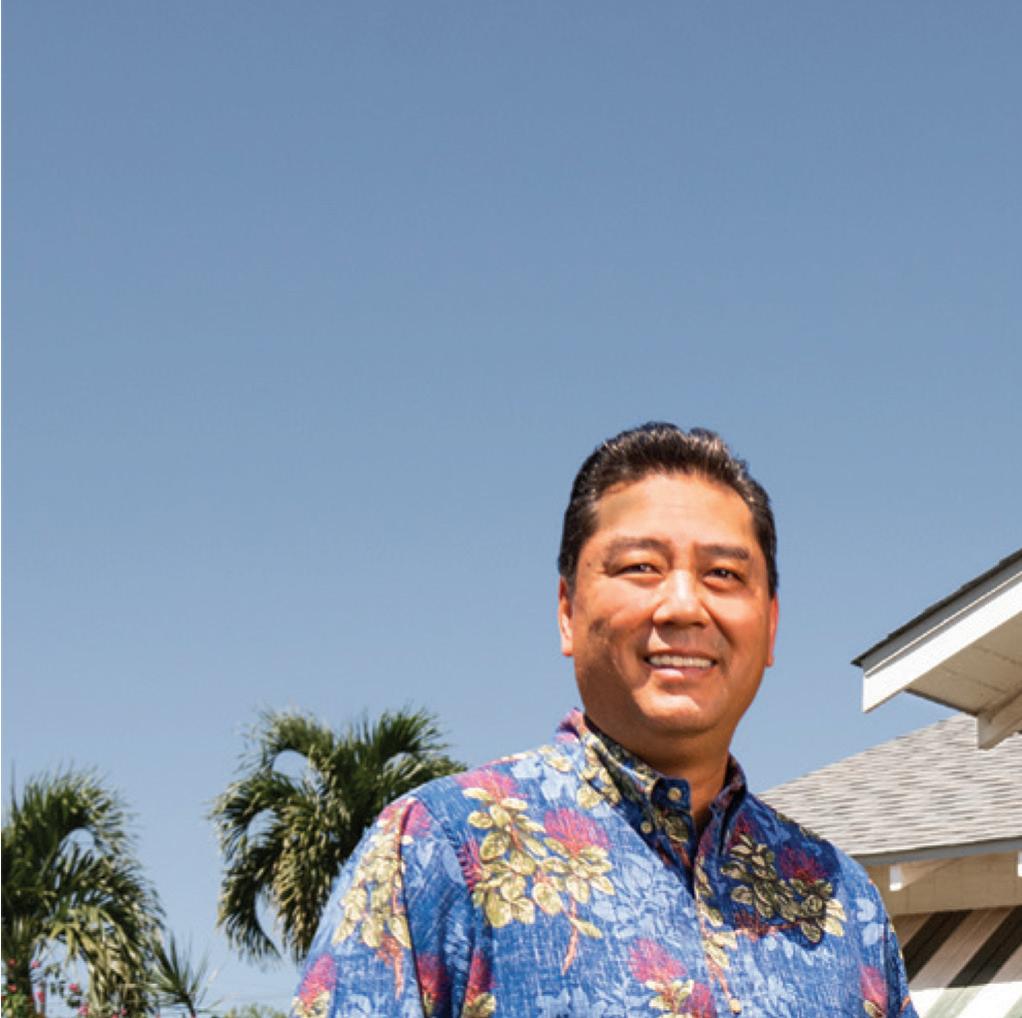


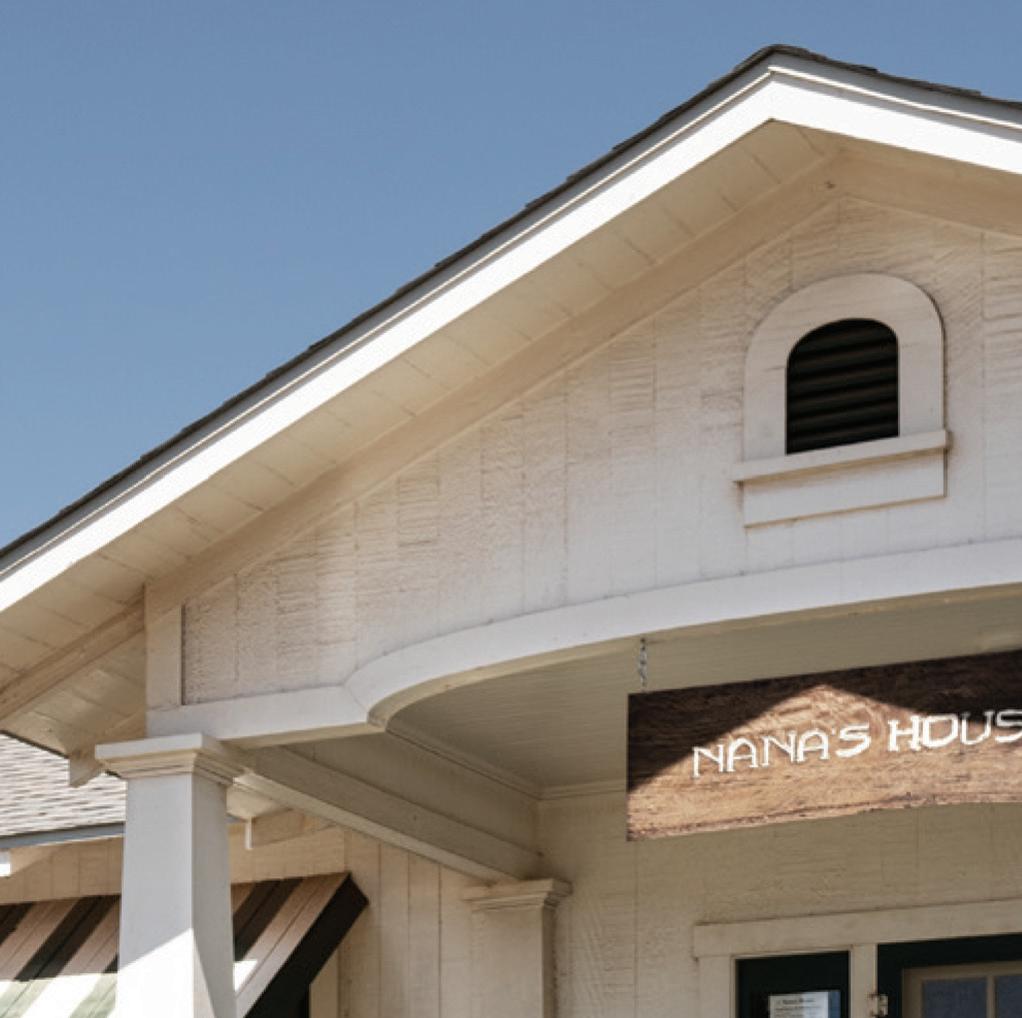

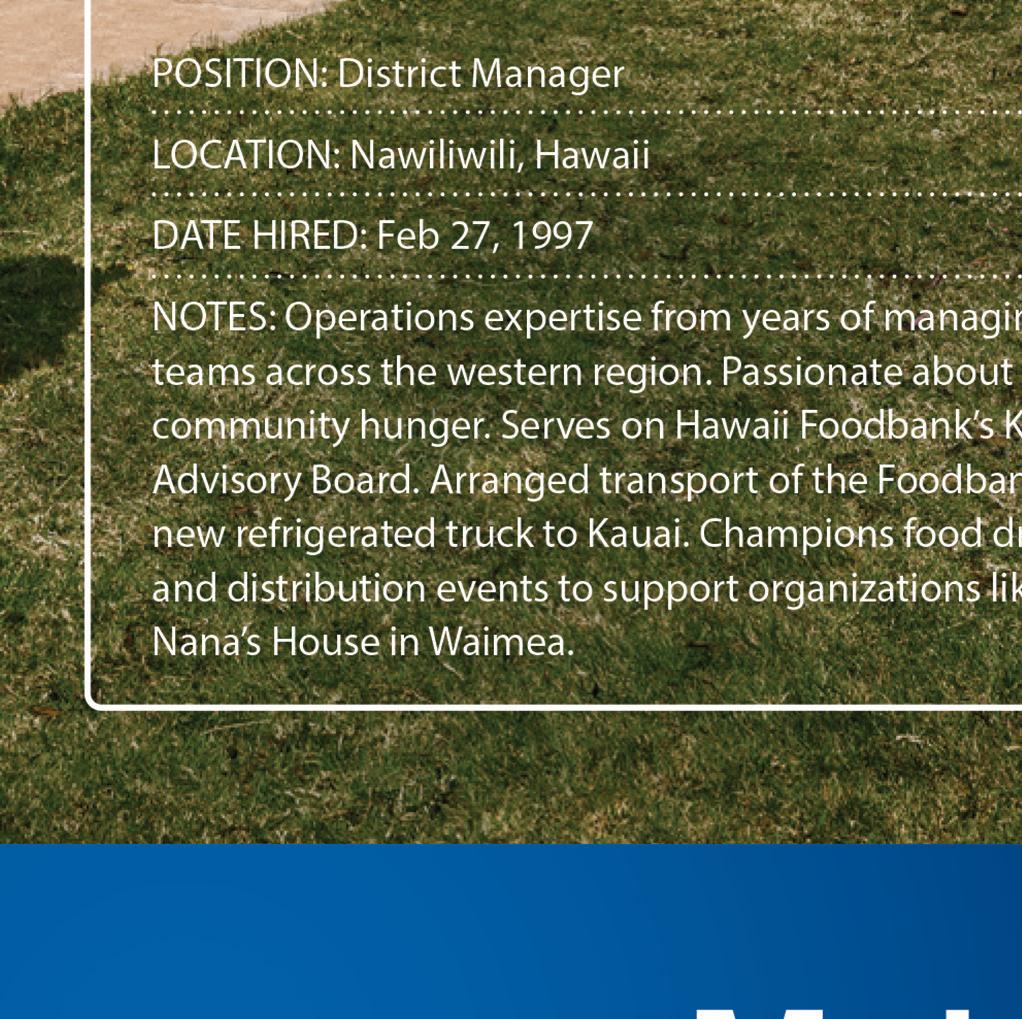




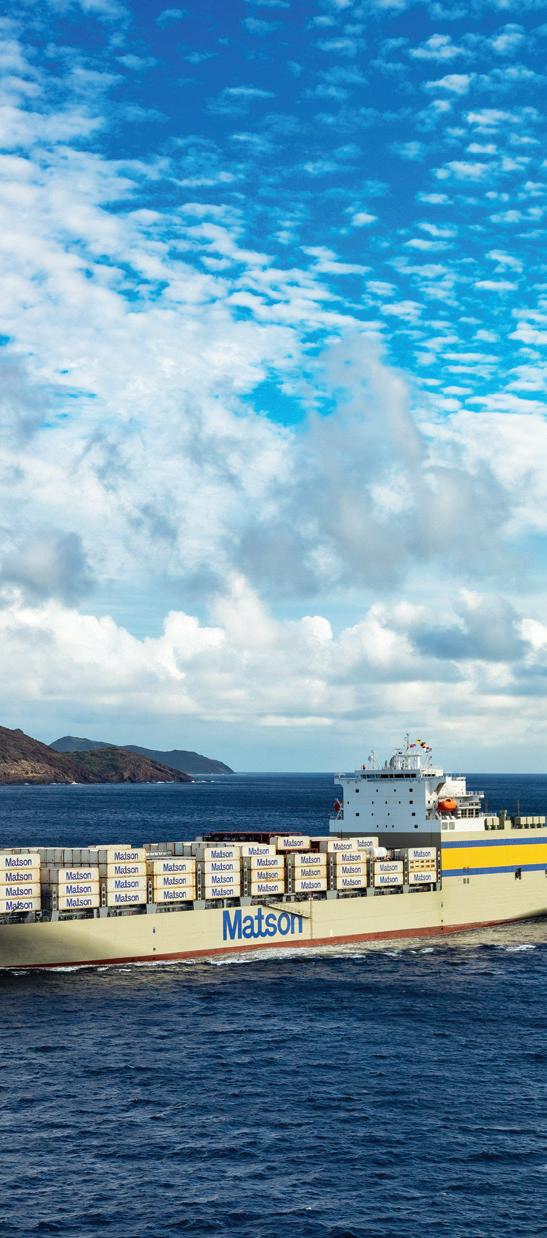
Shipping companies are anticipating a mixed year for 2025, with the start of operations at the new Kapalama Container Terminal beginning in the fall, slow revenue growth, probable rate hikes, and more sustainable shipping practices.
Although the numbers fluctuate somewhat month over month, imports and exports in Hawai‘i decreased significantly from August 2023 – August 2024, with exports down 11% and imports down 50.6%.
In August 2024, Hawai‘i was the 53rd largest exporter in the U.S., including Washington D.C., Puerto Rico, and the Virgin Islands, and 49th in total imports in the U.S., according to The Observatory of Economic Complexity and Knoema’s World Atlas. The state exported $27.1 million worth of goods and imported $173 million worth, resulting in a negative trade balance of $145 million.
Hawai‘i’s top imports continue to be refi ned petroleum ($46 million), and cars ($20 million). Top exports are scrap iron ($11.7 million), and scrap aluminum ($1.2 million).
Matson’s container volume to Hawai‘i in the third quarter of 2024 declined by 2.2% over the same period the previous year, which was consistent with the general softness in the market overall, says Len Isotoff, Matson’s senior vice president, Pacific.
“Hawai‘i’s economy has been affected by continued sluggish visitor arrivals due to Maui tourism being down since last year’s wildfires, and the slow recovery in Japanese visitor arrivals because of weak yen-todollar exchange rates,” he says.
At Pasha Hawaii, “On the containers/general consumer goods side,
we are projecting a flat to 1% growth rate as Hawai‘i residents and tourists alike look to be a bit conservative on their spending in 2025,” says George Pasha IV, President and CEO of Pasha Hawaii.
As for shipping rates, “As maritime workers and vendors are securing increases from carriers like Pasha Hawaii, we are laser-focused on improving efficiency to mitigate cost to deliver cargo for the Hawai‘i consumers,” Pasha says.
Once open for business in the fall, the new Kapalama Container Terminal will operate with efficient and regenerative energy, aligning with the state’s goal to transition to a clean energy portfolio by the year 2045.
At Pasha, 2025 will mark the first full year in which all three of


More than 400 highly skilled team members across the islands support Young Brothers’ 24/7 operations to deliver the safe and reliable service that connects our island communities.


Stay Connected with Young Brothers, visit youngbrothershawaii.com.



its container ships are powered by natural gas.
“Our Hawai‘i operations continue to benefit from the new ‘Ohana Class natural gas-powered containerships, MV George III and MV Janet Marie introduced in 20222023, and the newly repowered MV George II welcomed in 2024, the first steam-to-liquefied natural gas (LNG) conversion in the world,” Pasha says.
The result is a 99.9% reduction in particulate matter (microscopic pollutants) and sulfur oxide, a 90% reduction in nitric oxide and nitrogen
SINCE 1882
A proud American shipping company with Hawaii roots dating back to the days of tall ships and horse-drawn carriages, Matson introduced cargo containerization in the Pacific – an innovation that revolutionized the industry and became the worldwide standard – as well as the first automobilecarrying ship in the Pacific.
Matson was also among the first containership operators to recognize an obligation to protect the environment and set another industry standard decades ago with its Zero Solid Waste Discharge policy. Today, the company is working toward goals of reducing fleet greenhouse gas emissions by 40% by 2030 and achieving net-zero total Scope 1 GHG emissions by 2050.
Matson provides industryleading on-time delivery of
dioxide, and a 60% reduction in carbon dioxide compared to the previous fleet, says Pasha.
Matson also now has three vessels running on LNG.
“It was an important milestone in our company’s strategy to help combat climate change by decarbonizing our vessel operations,” says Isotoff.
Matson has also begun construction on the first of three new ships that will join its Hawai‘i fleet in 2026 and 2027; all will run on LNG.
“Matson is working toward aggressive environmental goals of reducing our Scope 1 fleet emis-
sions by 40% by 2030, and achieving net-zero emissions by 2050,” Isotoff says.
Matson is also in the midst of a more than $60 million terminal expansion and modernization project at its Sand Island terminal that will reduce environmental impact and deliver new levels of speed and resiliency against natural disasters. The company has converted to all-electric gantry cranes and overhauled the terminal’s electrical infrastructure, Isotoff says. To avoid power interruption, Matson has three stand-by power generators
Continues on page 36

essential goods to the economies of Hawaii, Alaska, Guam, Micronesia, and South Pacific islands, and premium expedited service from China to the U.S. West Coast. A key supply chain partner, its dependable U.S.-built, -owned and -operated ships and dedicated terminal assets can be relied upon to consistently deliver the goods that sustain Hawaii’s communities and businesses, as it has for generations.
In recent years, Matson has committed approximately $2 billion to building new, more advanced ships and
terminal improvements that improve its Hawaii service while reducing its environmental impact.
Last year, Hawaii Business ranked Matson as Hawaii’s top corporate donor to community programs, having contributed more than $8 million in cash and in-kind services to more than 870 nonprofit community organizations in 2023. Since the pandemic, the company has committed to providing $10 million in shipping services to support community foodbank networks through 2026.

Pasha Hawaii’s dynamic shipping network and knowledgeable professionals are here to serve your supply chain needs. Pasha offers the broadest range of container and roll-on/roll-off services between Hawaii and the Mainland, with connections to comprehensive intermodal services nationwide. Find out more at pashahawaii.com.
at the terminal, and will add three more generators next year to allow operations on stand-by power. New generators are already in place at all of Matson’s Neighbor Island terminals.
Matson will also be working with the State Department of Transportation Harbors Division on the expansion of their Sand Island Terminal into Pier 51 — increasing their terminal footprint and capacity by 30%. As part of this State plan, when Pasha moves to Kapalama, Matson will expand into Pasha’s current space, which is adjacent to Matson on Sand Island.
Matson is also redesigning their terminal gate with additional lanes and improved technology that will
As part of Young Brothers’ ho‘ohiki to deliver exceptional service, navigating interisland shipping has never been easier with its enhanced customer portal. Designed with the unique needs of local businesses and residents in mind, this digital tool streamlines shipment management, offering a convenient and efficient solution for users across the state.
Through the customer portal, users can easily:
• Get Rate Quotes: Receive tailored estimates for specific shipments to help plan and budget.
• Make Reservations: Quickly book frequently shipped items with just a few clicks.
• Track Shipments in Real-Time: Monitor cargo with up-to-date tracking.
• Pay Bills Online: Convenient freight payment options for credit account holders, including managing multiple invoices.
provide faster access to cargo for our customers in the newly expanded terminal.
“We outgrew our Sand Island space a long time ago, and for years have been operating out of three or four different locations around the harbor, so this will allow us to consolidate all our operations in a single location,” Isotoff says. “This will not only improve operating efficiency, it will reduce emissions and reduce traffic around Honolulu Harbor by eliminating all the extra movement of vehicles and equipment.”
With regularly scheduled service between California and Kahului,
Pasha Hawaii continues to carry a high volume of cargo in support of rebuilding efforts. Within a few months of the fires, the company began shipping mobile homes and portable school units to Maui to provide immediate short-term shelter, along with emergency rations, perishable and nonperishable food and beverages, and medical supplies.
“The volume of cargo shipped from the mainland to Maui continues to remain high,” Pasha says. “As Maui moves its focus from emergency relief to long-term recovery and as reconstruction begins in Lahaina and Kula, we are seeing construction materials and equipment being placed on our ships.”
With over 3,000 active accounts, Young Brothers’ portal is an integral part of the company’s ongoing mission to provide safe and reliable shipping. Aligned with the company’s broader fi ve-year strategic plan— which emphasizes technological innovation to enhance customers’ experience and operational efficien-
cy—the portal has seen a remarkable 340% increase in users over the past six months alone.
To learn more about Young Brothers, visit youngbrothershawaii.com, email info@htbyb.com or call (808) 543-9311. For inquiries about obtaining a credit account, please contact ybar@htbyb.com.


THERE IS SUCH A THING AS A “GOOD DEATH” – BUT IT CAN REQUIRE PLANNING TO BETTER THE ODDS . IN THIS STORY, END-OF-LIFE CARE PROFESSIONALS TALK ABOUT THE SUPPORT THEY PROVIDE TO PATIENTS AND THEIR LOVED ONES, AS WELL AS MISCONCEPTIONS ABOUT HOSPICE.
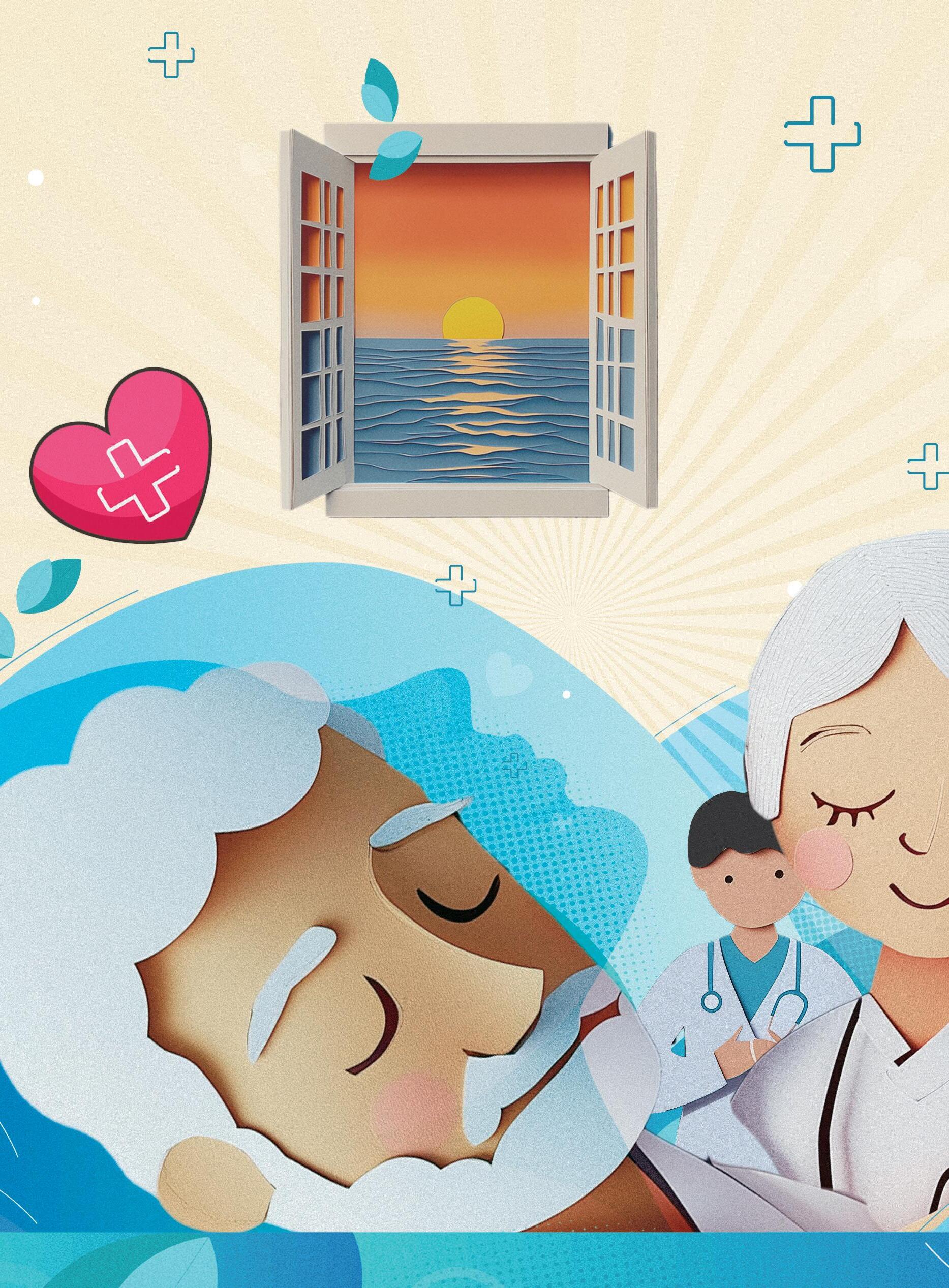
EEMMA SOUSA, 76, WAS BORN AND RAISED IN HILO AND STILL LIVES THERE. She married Laurence when both were 39. Before retirement she worked in human resources at Hawai‘i County’s Department of Finance, and he was a mechanical engineer for the county Department of Water Supply.
“Larry was such a wonderful person” – tall, handsome, intelligent, hardworking, she says, with “the biggest heart. … I was very, very fortunate to have been with him.”
In 2016, he was diagnosed with Paget’s disease of the scrotum. “It’s a rare and aggressive form of cancer,” but surgery seemed to have removed it all, she says. However, four years later, Stage 4 cancer was found in his lymph nodes. Chemotherapy was started immediately, but “after a while, the treatments weren’t as effective, and so we were referred to Hawai‘i Care Choices.” The Hilo-based

nonprofit offers hospice and palliative care, as well as bereavement services.
Sousa says Hawai‘i Care’s “very supportive management and staff” were at their side from day one, providing the medical equipment and support needed for quality care at home.
“The nurse, the social workers, the pastors, they were all there for us. … And the services included managing the medications, which gets rather complex,” she says.
A nurse taught Sousa how to treat her husband’s wounds so she could tend to him when the nurse wasn’t there. “I want to stress that the focus is on pain management. My husband was under excruciating pain” and Hawai‘i Care Choices helped control that, she says.
For the last two weeks of his life, the Sousas moved into the nonprofit’s residential facility for round-theclock support. “It was like a family atmosphere, plus the facility was a state-of-the-art facility. I mean, it was like a hotel room with a lānai. Frankly, we felt like a king and queen because they really treated us so wonderfully.”
Laurence Sousa died peacefully on May 24, 2022. “It was a Tuesday night, 8 o’clock. They told me, ‘You can stay as long as you want,’ and so I stayed overnight. They didn’t rush me out. I wanted to spend my last night with my husband, and I really appreciate their compassion,” says Sousa.
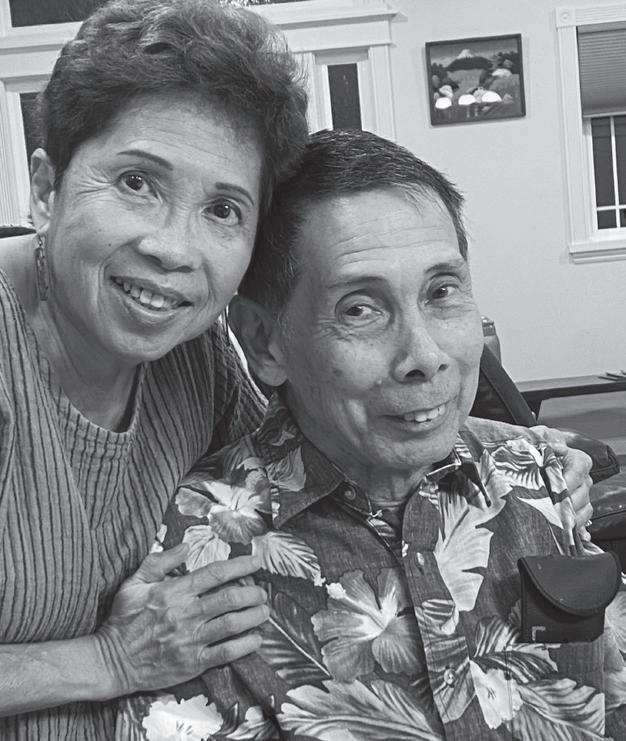
“Words alone cannot express our appreciation that Larry had such wonderful last days of his life because of Hawai‘i Care Choices. And after Larry passed away, they were still there for me with their bereavement care. Lani [Wegert, a manager at Hawai‘i Care], the pastor, the social worker – they always check on me.”
Sousa says she and
her husband both had Medicare and secondary insurance, which covered all costs. “We didn’t have to pay a cent,” she says, but “we donated to Hawai‘i Care Choices because we want Hawai‘i Care Choices to continue to provide care for others.”
And she became a volunteer. “That’s the best thing that we can do to show our appreciation and also have other families be blessed as we were blessed.”
Until the mid-20th century, Western medicine often pushed for aggressive interventions until the very end of life, an approach that frequently came at the expense of terminally ill patients’ comfort and emotional well-being.
Dame Cicely Saunders, a British nurse, social worker and physician, is widely credited with transforming the way we care for dying people. Having worked with terminally ill patients since 1948, Saunders concluded that much of their suffering was avoidable. She believed compassionate, specialized care was needed to address not just the physical, but also the practical, emotional and spiritual needs of those nearing the end of life.
In a 1963 lecture at Yale University, she introduced the concept of hospice care, a holistic approach that would lay the groundwork for endof-life care worldwide.
One of Saunders’ key contributions was her advocacy for better pain management. At the time, it was common to withhold additional painkillers until previous doses had worn off, out of fear of addiction or overdose. Saunders argued that, for terminally ill patients who suffer great pain, the risk of addiction is irrelevant and the risk of overdose could be mitigated.
Saunders also reimagined the environment for patients. She rejected the rigid visiting hours of hospitals, saying that families should be free to spend lots of time with their loved ones. She saw hospice as a place of comfort, compassion and dignity for
dying patients and their families, with bereavement services supporting the family after a patient’s death.
In 1978, the St. Francis Healthcare System became Hawai‘i’s first hospice care provider; the next year, Hospice Hawaii, now Navian Hawaii, became the second. There are now 11 licensed hospice care providers in the Islands.
Hawai‘i has the nation’s highest average life expectancy, 80.7 years, according to the Hawai‘i State Plan on Aging 2023-2027. Additionally, 24.9% of the population is 60 or older – and that’s projected to rise to 29% by 2040.
For people in that demographic, it is important to talk with loved ones about an advanced care plan – before it’s needed. They can ask questions like, “If you were in the final stages of a terminal illness, being kept alive by a machine, when would it be appropriate to pull the plug?” and, “If you couldn’t speak for yourself in a medical emergency, who would speak for you?”
“The law calls it a health care power of attorney or a health care agent,” Jeannette Koijane, executive director of Kōkua Mau, says of the second question. She describes her nonprofit as a “movement to improve care for those with serious illness and their loved ones.”
Koijane advises people to complete both parts of an advanced directive: “One is appointing that agent, and the second is talking about your wishes for the very end of life.” She says the stigma surrounding death in Western cultures too often discourages people from having these “difficult, but really important conversations” ahead of time. “If we can talk about things early, hopefully we can relieve some of that stress.”
HOSPICE IS A SUBJECT THAT MANY PEOPLE PUT OFF
Patients with prognoses of six months or less to live qualify for hospice. But according to the National Hospice and Palliative Care Organization, half of hospice stays are for no
more than 18 days, and “a full quarter of all beneficiary stays in 2022 were for five days or less.”
Hospice workers say they want to dispel misconceptions that prevent patients and their loved ones from reaping the full benefits of hospice care. Here, they address five myths.

Perhaps the most dangerous and common misconception is that entering hospice accelerates dying because patients stop pursuing curative treatment. But a study published in 2007 in the Journal of Pain and Symptom Management looked at the survival rates of 4,493 patients and found the opposite is true: Patients who received hospice care early lived longer than nonhospice patients. Later studies reinforced that conclusion.
The original study showed patients lived an average of 29 days longer because “their pain and symptoms were managed” better, says Dan Haire, president and CEO of Navian Hawaii.
“And it’s not just living 29 days longer because we’re like pulling them across the finish line. These people are thriving. They’re feeling good. They’re living well, they’re surrounded by their friends. So it’s a great benefit,” Haire says.
Lani Wegert is the engagement marketing manager at Hawai‘i Care Choices, the agency the Sousas used. “If you look at the word disease, it’s ‘dis-ease.’ And what happens is, once we bring them on to hospice care, we’re able to minimize that to a point where they start to feel better, because they’re not all stressed out,” she says.
Hospice care improves the well-being of seriously ill patients and their loved ones in several ways. “We cover all medications that are related to somebody’s terminal prognosis. We cover all their supplies. We cover (and deliver) all of their durable medical equipment: hospital beds, bedside tables, bedside commodes, oxygen tanks,” Haire says.
But how can hospice extend life expectancy when it stops terminally ill patients from pursuing curative treat-
ment? The research conducted and reported by the National Hospice and Palliative Care Organization attributes it to three main things:
1. Avoiding the unintended consequences and negative side effects of aggressive curative treatment.
2. Access to other forms of treatment and care that can be provided at home, which focuses on pain management, taking care of practical matters, and nurturing emotional and spiritual well-being.
3. Boosting morale, decreasing stress and increasing patients’ motivation to live because their physical and emotional needs are being attended to.
In addition to providing medical equipment and medications at home, there are several more specific ways hospice may improve quality of life.
Many hospices also have volunteers, but recruiting them can be challenging. Faye Mitchell, executive director of North Hawaii Hospice on Hawai‘i Island, says pairing volunteers with patients “is a lot like matchmaking.” The hospices take into consideration the personalities of both patients and volunteers – their interests, spirituality and “which town they’re from, because you know how that matters sometimes in Hawai‘i.”
Volunteers can be meaningful presences, providing companionship and emotional support, especially when loved ones need to step out. “They can be in the home while a wife goes to the grocery store for an hour and a half,” says Haire, and can minimize the guilt caregivers often feel when they take a break.
All hospices are required to offer bereavement services. “We have a formal bereavement program so that for 13 months after a patient passes, we follow and take care of that family,” says Haire. His Navian Hawaii nonprofit also provides bereavement support before a patient’s death.
Hospice care providers may also offer various adjunct therapies. “So

that’s art therapy, equine therapy, pet therapy, music therapy, massage therapy, aroma therapy, all that stuff,” says Haire. These can be cathartic for both patients and their loved ones, he says. An art therapist, for example, can help a child with a terminally ill sibling or parent by giving them a creative channel for their emotions.
All hospice care is palliative care, but not all palliative care is hospice care. Palliative care is for those suffering from conditions that are serious, chronic or life-limiting, but aren’t necessarily terminal. “The top diagnoses for palliative care are normally cancer, congestive heart failure, COPD and kidney, lung or liver disease,” says Wegert.
Palliative care patients can receive comfort care in their homes while pursuing curative treatments, such as chemotherapy, radiation, surgery and dialysis. “They’re still trying to get better in palliative care versus hospice, [where] they’re just trying to feel better,” Haire explains.
Research has shown that early use of palliative care in conjunction with curative treatment can improve a patient’s quality of life, reduce the cost of care and increase a patient’s chances of surviving a serious illness.
A cancer patient, for example, may use palliative care to help them deal with the negative side effects of chemotherapy. That care could be in the form of a nurse who comes to the patient’s home to administer pain medication or a respite volunteer who swings by to help with cooking and cleaning. Palliative care can also include acupuncture and visits from therapy animals.
Wegert says patients in palliative care are “already in the pipeline with us. So, if it’s time for them to ramp up to the next level, which is hospice, they’re already familiar with us, so they’re not afraid of us. They know that we’re not the grim reaper.”
In recent years, both Navian Hawaii and Hawai‘i Care Choices changed their names, from Hospice Hawaii and Hospice of Hilo, respec-
tively, to reflect that they offer services outside of hospice – namely, palliative care. It’s important to note that not all hospice providers offer palliative care.
Koijane says people think of hospice as “a place you go.” In fact, while many hospice patients receive care in hospice facilities, hospitals, nursing homes and assisted living facilities, the majority are cared for at home.
According to Koijane, in Hawai‘i 87% of people who die at home are hospice patients. In addition to home being familiar and comforting, it’s usually the most convenient place for family and friends to convene and spend time with their loved ones, which can be a huge morale boost for everyone involved.
Every patient in hospice and palliative care is assigned an interdisciplinary team, which includes a physician, nurse, social worker and chaplain.
“All hospices have to have certain positions filled that take care of a person so that you’re handling the physical, psychosocial, psychological, emotional, spiritual. You have to cover all the bases,” says Mitchell.
As death nears, people often ponder the meaning of life, reflect on how they spent their time on Earth and what the afterlife entails. It’s also a time of introspection for friends and family as they process grief, a difficult emotion.
“A lot of times, people are contemplating their faith, their spirituality at the end, so it is something that is talked about and nurtured, whether it’s bringing in someone from the community, or it’s one of us who is coming in regularly,” says Mitchell.
Chaplains offer spiritual and bereavement support for people of all denominations and beliefs. “They are not there to push religion, they’re there to provide support if you wish to have it,” explains Amy Goyer, AARP’s national family and caregiving expert.
After her father passed in hospice, a chaplain “was the first person that got there, and he was wonderful. Because, you know, my sisters and I
were just devastated, and it was just support … someone there to help hold us together and help us through it.”
The chaplain and social worker are supposed to check in regularly with patients and their loved ones. The social worker can also help with practical matters in advance, such as organ donation and transportation of the body after death.
Goyer says her family’s social worker helped arrange her father’s body donation, “because we knew he wanted to do that. She helped a lot with the logistics … when all I wanted to do was cry.”
Indeed, hospice care is not only for the patient, but also for their loved ones. “We do medication delivery, we supply and deliver equipment. It relieves some of that burden of caregiving and a lot of stress,” says Melanie Dwyer, who started at Hospice Maui as a nurse and now serves as its CEO.
Dwyer’s colleague, Community Outreach Coordinator Anna Hill, adds, “One thing people don’t know is what death looks like in a home without hospice. If you’re under the care of a hospice physician, it’s considered an attended death, and a nurse can go out and complete a pronouncement, and it can be very seamless.” This grants families time to process their loved one’s death and to grieve, she says.
In contrast, “If hospice is not involved and it’s not attended by a physician, it is required for the Police Department and a lot of times the Fire Department [to come]. … There is this very limited amount of time because they have to do what they have to do. Instead of having that time and space, you’re talking to police officers, firefighters, the coroner. It’s very sensory overload when it could just be such a different experience.”
Dwyer adds that she’s seen firsthand the stark difference between the Police Department picking up deceased loved ones and zipping them in body bags versus mortuary workers “picking them up in hospice care, [which] is just wrapping them in a sheet,” where their faces can be visible and their families have all the time they need. The former adds an “extra layer of trauma and it’s so devastating to watch.”

But with so many people hesitant to begin hospice care, it happens all the time. “There’s a statistic that 80% of people want to die at home, but only about 20%” do, Mitchell says.
Koijane adds: “People think that you go into hospice and die like two hours later, as opposed to thinking we’re going to manage pain, we’re going to look at anxiety and stress, think about spiritual suffering, [and] help the family have some really important conversations.”
She reflects on her experience caring for her mother, who died in 1999: “Those conversations with my mom, I still remember them 25 years later. Super important conversations that, had we only been focusing on surgery and brain tumors and sitting around in a hospital, we wouldn’t have had the space for.”
According to the National Hospice and Palliative Care Organization, in 2022, 10% of hospice patients were in hospice for 48 hours or less and 75% for 87 days or less.
“It’s just the way we look at hospice as a country; we see it as a last resort,” Mitchell says of the relatively short hospice stays. “That is unfortunate, because people are missing out on a huge amount of benefits.”
Hospice has been covered by Medicare since 1982. Those benefits are also usually completely covered by Medicaid and secondary health insurance providers like Kaiser Permanente and HMSA. In cases where someone does not have insurance and needs financial assistance, many hospice care providers have donation funds to pull from. Both hospices and individual patients can also apply for and receive grants to reduce care costs or cover them entirely.
To qualify for hospice care, patients must have a prognosis six months or less to live. “I calculated that if they were to use those six months, they would essentially be getting about $57,000 worth of benefits,” says Mitchell. The median stay of “18 days is nothing comparatively, so they’re missing out on nearly $60,000 in benefits.”
Patients who outlive their six-month prognoses can continue to receive care
at no additional cost for as long as necessary. “Six months is only the entry point, but we’ve had patients on for almost two years. Essentially, if you are still declining and just taking care of comfort measures, you still qualify for hospice.” And for as long as you qualify, your insurance will continue to cover care.
Medicare also generally covers most palliative care costs in Hawai‘i. And in 2024, Hawai‘i became the first state to approve a Medicaid plan for beneficiaries that fully covers costs of palliative care in nonhospital settings.
This is half true: If you’re enrolled in hospice care, you’re no longer pursuing curative treatment for the specific condition that qualifies you for hospice. However, you can still seek curative treatment for other conditions you might have.
Goyer’s father, for example, had Alzheimer’s, which could have made him eligible for hospice care. But she says she had reservations because hospice rules would prevent him from taking his Alzheimer’s medication.
“To me, everyone knows that’s not a cure for all Alzheimer’s. Why would he have to go off of it? It’s a comfort treatment really. It’s to make him be able to get up out of the chair at that point in the disease or possibly communicate a little more. So I didn’t want to take him off that,” says Goyer.
“But he also had congestive heart failure, so they were able to admit him to hospice” with that diagnosis, she says. He stopped pursuing treatment for his congestive heart failure, but “he was able to stay on his medication for the Alzheimer’s until he died.”
Also keep in mind that you can opt out of hospice care if you decide to pursue curative treatment. “I think people have this misconception that once they enter hospice, they can’t leave; but you can leave anytime and then come back whenever,” Mitchell says. “People can actually just try it out. It sounds funny, but we have people do that. … So it’s a great option, and you’re in charge of it.”
For some patients, hospice provides a much-needed break from aggressive curative treatments, such as high-dose chemotherapy and invasive surgeries, allowing them to focus instead on their comfort and well-being. When they’re feeling ready and strong enough, they can leave hospice and resume curative treatments alongside palliative care.
Some patients’ health improves so significantly after shifting from curative treatment to pain management and comfort care, they no longer need to be in hospice, Mitchell says. “About 18% of our patients (at North Hawaii Hospice) ‘graduate,’ meaning that they get so well that they can’t qualify for hospice anymore.”
At Maui Hospice, 20% of hospice patients “graduate,” Dwyer says. “So I really sometimes struggle with that prognosis piece” of six months or less to qualify for hospice, because “that is a real deterrent for people. When people say yes to hospice care, it feels like saying, ‘Yes, I am going to die in six months.’ But that’s not always the case.”
One example is Jimmy Carter. The former president has been open about his decision to enter hospice in February 2023. Two years later, he’s still alive and still in hospice. At 100, he’s the longest-lived U.S. president ever.
Wegert says several hospices in the state offer palliative care, “which is pre-hospice for sure, then hospice care, and then all of us are mandated to provide bereavement care as well. But I’d have to say that we’re not all the same.”
Because care providers vary in size, specialties, services offered and overall quality of care, she suggests that people do their due dil-

igence before deciding which hospice is right for them or their loved ones.
On O‘ahu, the hospice care providers are Bristol Hospice Hawaii, Islands Hospice, Malama Ola Health Services, the St. Francis Healthcare System and Navian Hawaii. Of those, Navian is the only one that offers hospice care for children. And St. Francis is the only faith-based hospice that offers care specifically designed for Catholic patients.
Hospice care providers must meet specific requirements set by Medicare, state licensing regulations, and/or accreditation standards. While some stop at the minimum requirements, other providers go beyond.
For example, Dwyer says, “There are certain things that are required by Medicare that are very simple regarding grief and bereavement, but you can really kind of hone in on the differences between programs and what they offer.”
She says it’s important to ask questions to clarify what specific services are offered and which ones aren’t, such as, “Do you do in-person groups and virtual groups? Do you do events and things to help people during the holidays? Because that first year is really hard going into the holidays after you’ve had a loved one die.”
Hospices especially differ in the kinds of adjunct therapies offered. Some hospices may only fulfill the required roles of the interdisciplinary team, leaving volunteers to do basic respite. Others offer extra services.
Dwyer says Maui Hospice is “kind of unique” in that it not only covers acupressure, reiki and massage therapy, but also a variety of treatment modalities for each of those therapies. “We offer to both the patient and the primary caregiver, and so they can have up to eight sessions that are complimentary, where we send the providers out to their homes.”
An important distinction among hospice care providers is whether they operate as for-profit or nonprofit organizations. When the modern hospice care movement began in the 1960s,
and on into the 1970s, it was mostly nonprofits and volunteer driven. That started to change when Medicare began paying for hospice care in 1984, which incentivized for-profit businesses.
Hospice in America has since become a growth industry dominated by for-profit enterprises, many of which are regional and national chains. Today, three-quarters of the nation’s more than 5,300 hospice care providers are for-profit.
A 2023 study published in the Journal of the American Medical Association Internal Medicine included a survey of more than 650,000 caregivers whose loved ones were receiving hospice care from 3,107 hospices.
Although the study found variation in quality of care given by both for-profit and not-for-profit hospices, the authors’ preliminary research indicated that, on average, for-profits performed significantly worse in several areas: “Prior research found that, in contrast to notfor-profit hospices, for-profit hospices focus on delivering care to patients in nursing homes, provide fewer nursing visits, and use less skilled staff.”
This survey asked respondents to score eight measures of hospice care performances, including “communication, timely care, symptom management, and emotional and religious support, as well as a summary score averaging across measures. Linear regression examined the association between profit status and hospice-level scores, adjusting for other organizational and structural hospice characteristics.”
The study concluded that “family caregivers reported worse care experiences at for-profit hospices compared with not-forprofit hospices.”
A study published in 2024 in the American Journal of Hospice and Palliative Medicine, which specifically focused on the 50 largest hospices in the U.S., reported similar findings: “Caregivers and employees had better experiences with nonprofits than for-profits. Anger and frustration were expressed toward large, for-profit providers more focused on admissions, profiteering, and paying dividends than actual care.”
Some people I interviewed who worked for local nonprofit hospices had qualms with the for-profit model. “Sadly, there is quite a lot of corruption in hospices – not here that I know of, but on the mainland it’s like, really, really rampant,” Wegert says.
Mitchell of North Hawaii Hospice says: “If you think about it, it makes sense because they have certain financial goals that are front and center. If your focus is profit, that’s going to happen, whereas I’m so glad I’m part of a nonprofit.”
The largest hospice care provider in the state, Bristol Hospice Hawaii, is a for-profit organization and part of a national chain headquartered in Utah. Bought by private equity backer Webster Equity Partners in 2017 for $70 million, it offers care in 15 states.
Dani Moreno, a former volunteer coordinator at Bristol Hospice Hawaii, says the company had “a little



over 600 patients” when she started working for Bristol in February 2024. When she resigned eight months later, she estimates the company had around 830 patients.
“That’s a ridiculous amount of growth. I can’t imagine [they’re] caring for people well when [they’re] spread so thin. Absolutely, it’s sacrificing quality of care,” says Moreno. “I’m not saying individually people are bad. I’m saying the system that we’re in makes it really hard for us to take care of people.”
Two people who previously worked at Bristol and are not named in this story estimate that Bristol now has about triple the number of patients in Hawai‘i compared to the Islands’ second-largest hospice group. Moreno says her former employer should stop adding to its numbers because “the rapid rate of growth has not been sustainable.” I contacted Bristol Hospice Hawaii about this article, and its senior executive director and regional VP agreed to a Zoom interview for the
following week. But 15 minutes into that interview, the Bristol representatives ended the call.
Once I let them know I was going to ask about the differences between for-profit and nonprofit hospices, they said they had to jump off the call because they were being paged by a surveyor. Minutes later, I received an email from them that stated: “Please just leave Bristol out of the article as I won’t have time (to talk) today due to the current survey going on.”
Hawaii Business Magazine felt the perspective of the state’s largest hospice provider was important to this story, and that readers should understand Bristol chose not to participate.
Mitchell of North Hawaii Hospice says all three of the nonprofit hospices on Hawai‘i Island work together and their dynamic is much different than that at for-profits: “I’m friends with the executive director of Kona Hospice and the executive director of Hawai‘i Care Choices, and we share so much with each

other to help each other out. We’re not in competition. In fact, we’ve got each other’s backs.”
Unlike for-profits, nonprofits are required to make certain information public, including their yearly revenue, funding, assets, expenses, executive compensation, salaries and other wages. You can find that information on online databases such as ProPublica and Cause IQ.
“I don’t think I could work for a for-profit hospice, because I feel like all of it is not coming back into the organization to help the community. That’s really sad to me, because all the money that we make, we have to put it back into the company to provide the best care possible. That’s the focus versus, ‘We gotta make sure that whatever shareholders are making money.’ So there’s a philosophy divide for sure,” says Wegert.
Nonprofit hospice providers currently outnumber for-profit providers in Hawai‘i, 8 to 3. Based on my research, all of them operate exclusively in Hawai‘i except for Bristol.


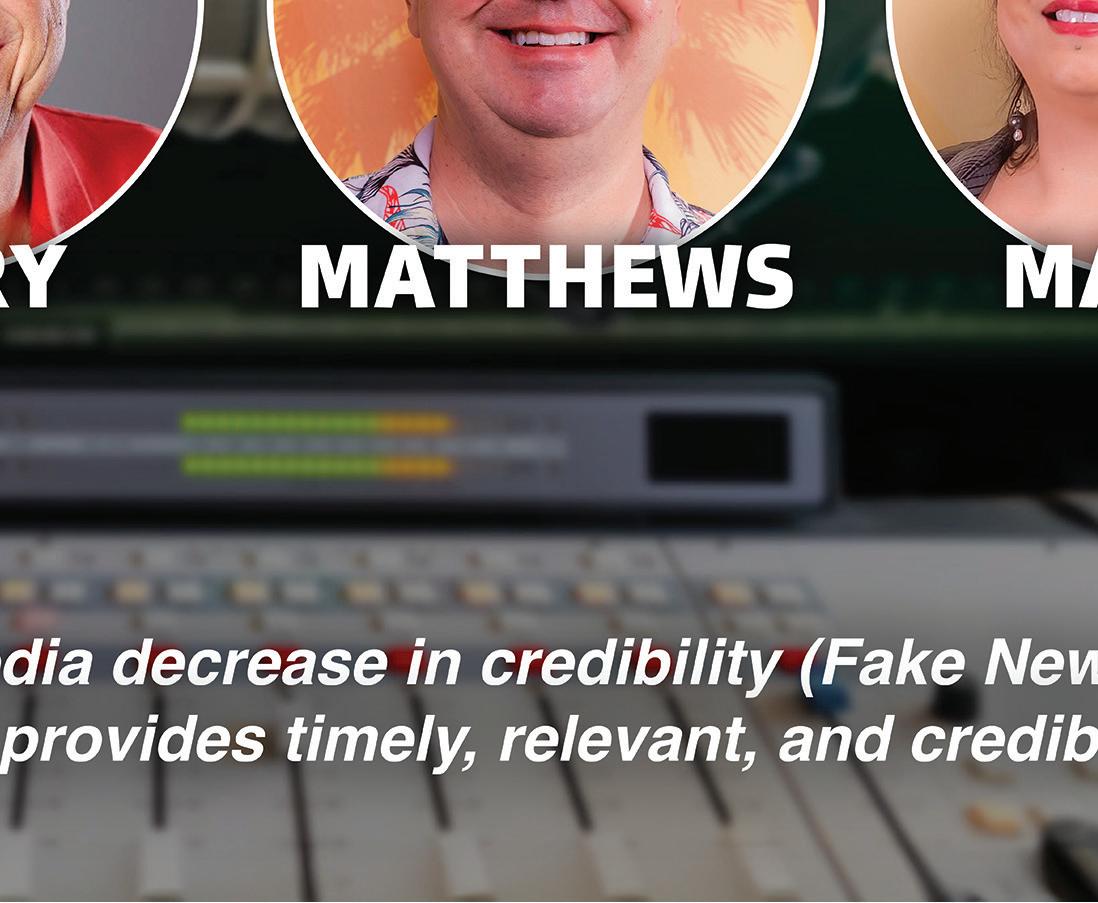





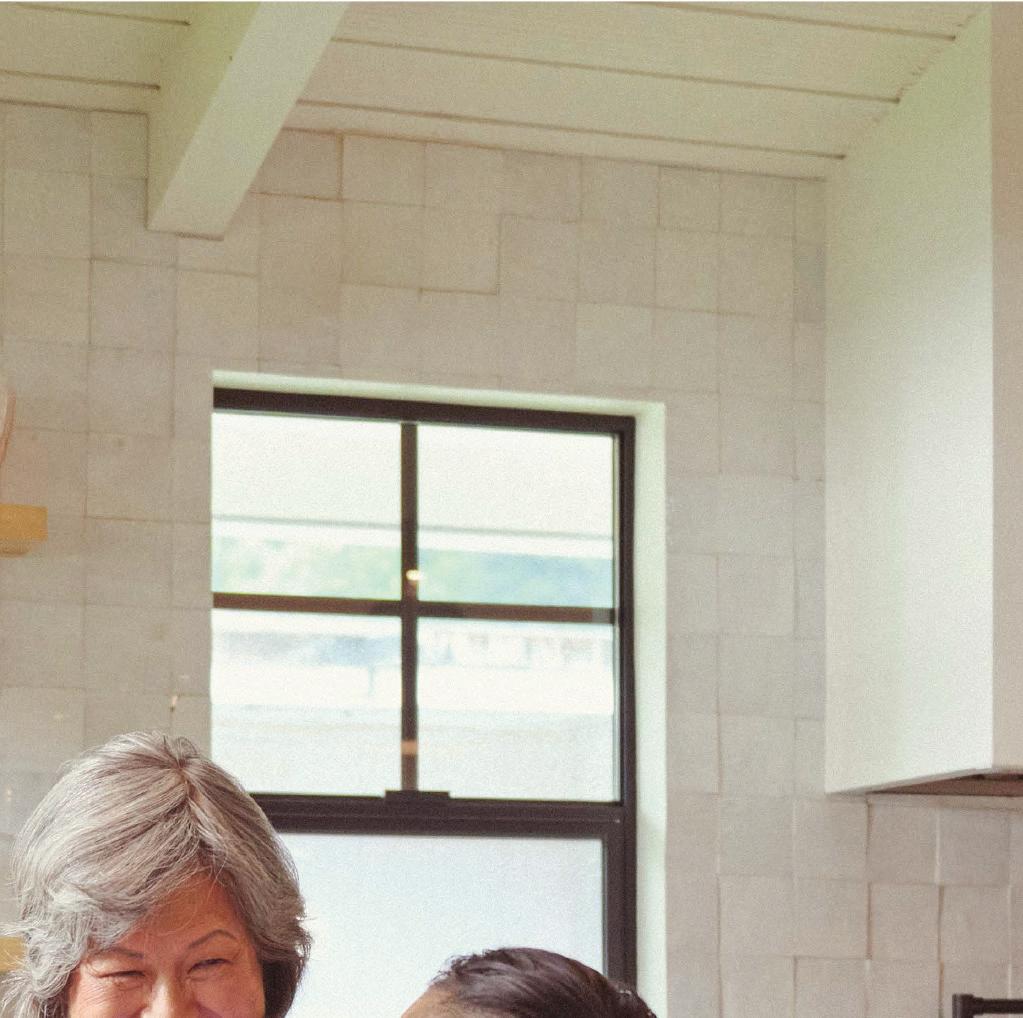
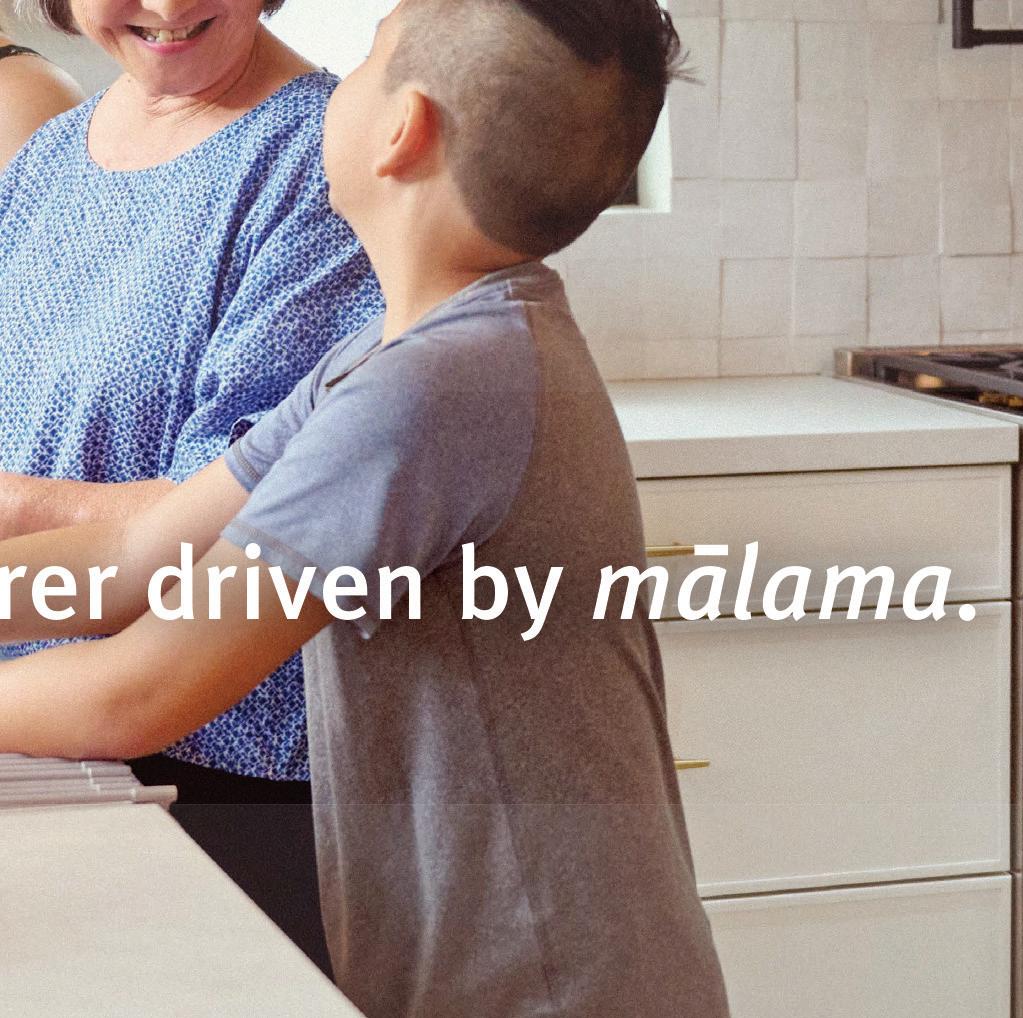




“Our
employees
like family.

are
It’s very important that they have the best health care possible.”

“Mahalo, HMSA, for 50 years of taking care of our


employees.”
- Jonathan Ota, Owner, Tip Top Cafe



For 86 years and counting, HMSA has had the privilege of providing our members and employers with access to quality, dependable health care. Watch their inspiring stories at hmsa.com/alwaysthere
To learn more about our health plans, visit an HMSA Center near you.


DR. KENRIC MURAYAMA
EXECUTIVE VICE PRESIDENT AND CHIEF HEALTH OFFICER, HMSA
A NEW YEAR UNFOLDING,
KENRIC MURAYAMA, M.D., F.A.C.S., EXECUTIVE VICE PRESIDENT AND CHIEF HEALTH OFFICER, HMSA, SHARES WAYS TO STAY HEALTHY AND HAPPY IN 2025:
Q: How is HMSA keeping Hawaii healthy?
We’re here to support our members wherever they are in life. Our commitment is to ensure access to quality, affordable care. We work closely with our large network of providers, health systems, hospitals, pharmacies, and provider organizations to improve health in Hawaii.
Our Primary Care Payment Model reimburses primary care physicians for the quality of care provided rather than the quantity of services rendered. Key improvements include better access to providers, more ways to connect, ease of member-provider communication, and overall improved quality of care.
What’s new with HMSA?
We’re excited to expand our cardiac rehabilitation program to provide resources like exercise training to promote a healthy heart, education on maintaining hearthealthy living and reducing risk factors, and counseling to manage stress.
Research shows this type of support is effective with dedication and commitment. Through this program, we can help ensure our members recovering from cardiac-related events have access to the care and resources they need for a healthier, happier future.
What sets HMSA apart from its competitors?
HMSA has been caring for the people of our state for more than 86 years. Members choose from our expansive network of 7,500 physicians, 38 urgent care providers, three health systems, 23 hospitals, 223 pharmacies, and nine provider organizations.
What are some tips for a healthy 2025?
With busy schedules and demands on time, putting health first is important. Eat healthy: Avoid processed foods. Choose fresh fruits, vegetables, and healthy protein like fish, lean meats, and tofu. Make time for exercise: A simple 30- to 40-minute walk five days a week with a friend or while listening to an audiobook can clear your mind. Find a hobby that brings you joy: Recharging your battery will help you create and maintain work-life balance, be a better partner to your loved ones, and sleep better. Life is too short to waste!
Dr. Murayama is a respected surgeon, health care leader, and HMSA’s chief health offi cer overseeing the Health Services Division, which advances health care outcomes and strategic provider relationships to improve the lives of HMSA members and the health of Hawaii.
HMSA’s goal is to help ensure that quality health care will be available and accessible to people across Hawaii for generations to come.
Rising costs and access to care are critical challenges. HMSA’s clinical integration initiatives focus on lowering the costs of care and improving health outcomes for a more sustainable health care system in Hawaii. Clinical integration efforts include:
Value-based care models, which focus on quality over patient volume.
Innovative pilot programs that leverage new technology to reduce costs and improve quality.
Collaborating with health care partners to optimize treatment planning and care delivery.
Establishing a physician taskforce to address administrative burden.
New year, new benefi t
HMSA is expanding its cardiac rehabilitation benefit to commercial plan members, effective on Jan. 1. The benefit is already available to HMSA QUEST (Medicaid) and Medicare members.
The benefit helps members improve their cardiovascular health through personalized education and support. For more information, talk to your primary care provider or cardiologist or call HMSA.
HMSA is Hawaii’s most experienced health plan, serving the state for more than 86 years. Headquartered on Oahu with centers statewide, HMSA is an independent licensee of the Blue Cross and Blue Shield Association. Learn more at hmsa.com.
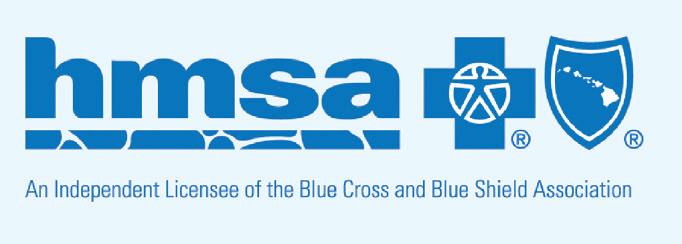


STORIES ON:
BUILDING UP TO ADD HOMES
ADDING TO THE HOMEBUILDERS WORKFORCE FINISHING RAIL’S NEXT TWO SEGMENTS NURTURING NEXT GENERATION CONTRACTORS
BY SHELBY MATTOS
MOST IMPORTANT, HIGH-RISE HOUSING PROJECTS – ESPECIALLY WHERE MUCH INFRASTRUCTURE ALREADY EXISTS – ARE A LOT CHEAPER THAN SINGLE FAMILY HOMES BUILT IN NEW DEVELOPMENTS. AND THOSE HIGH-RISES ALLOW MORE PEOPLE TO WORK, SHOP AND PLAY CLOSE TO HOME.

IF WE WANT TO INCREASE THE SUPPLY OF HOMES FOR LOCAL PEOPLE, WE NEED TO BUILD UP, says Alana Kobayashi Pakkala, CEO of Kobayashi Group, a local, family-owned development company.
“I think it’s inevitable that in order to meet the housing demands of our community, we need more vertical development,” she says. “I do believe in keeping the country country and trying to preserve our rural areas to the best of our abilities, and so really the answer to that is to get more people living in the urban core where high-rises are already part of the lifestyle.”
In urban areas, the infrastructure for new housing – roads, sewers, utility lines – already exists to a large degree, which reduces the cost of building new homes.
Economist Paul Brewbaker has long advocated for greater urban density, following two principles of what he calls “bumper sticker economics.” The first principle is “Keep the Country Country: Make the City City.” If Hawai‘i wants more housing for local people that doesn’t sprawl into rural areas, he says, it must increase the density of its existing urban areas.
Brewbaker’s second principle of bumper sticker economics is “Density is Proximity, Proximity is Mobility,” which means that when people live close to jobs, stores, restaurants and entertainment, long commutes are eliminated.
Kobayashi has a similar mindset. The problem, she says, is that a lot of Hawai‘i is zoned only for single-family homes, which cost a lot more to build than multifamily homes.
“There is very little land zoned for multifamily at all, and very little land that’s zoned for urban density that would actually be cost-effective, where you could actually deliver homes at a lower cost that’s accessible to our kama‘āina population,” she says. “If you think about it, the higher you can build, the less expensive it is to deliver homes.”
Existing infrastructure also reduces the cost of new housing. “It all comes down to where you’re pulling your infrastructure from – where you’re accessing sewer, water, gas, electrical, etc. – and every district would have certain capacities,” she says.
Hawai‘i has the highest construction costs in the country
– so building homes will always be expensive, Pakkala says, but greater density mitigates those costs.
“The dream of your very first home being a single-family home with a yard – that’s a wonderful dream, but I think it sits outside of reality, outside the grasp of the majority of our community,” she says. “But a condominium is within the grasp of more people.”
Then later on, after a family has built equity in a condominium, maybe they trade up to a bigger condo or a single-family home. “That’s the whole concept of the housing ladder,” Pakkala says.
Most homeowners in Hawai‘i are older, while young adults have the lowest rate of homeownership. Less than 32.7% of people in Hawai‘i born between 1981 and 1996 own their own homes, the third lowest rate in the nation, according to the U.S. Census Bureau.
“This is our future,” Pakkala says. “These are our [future] leaders. And if we can’t deliver homes to that generation, then our workforce issues, our out-migration issues, are just going to continue.”
While some people might have doubts about condo life, Pakkala
THE PARK ON KE‘EAUMOKU, TOP, AND KUILEI PLACE, BELOW, BOTH UNDER CONSTRUCTION NOW, ARE TWO EXAMPLES OF ADDING PLENTY OF HOUSING IN CENTRAL HONOLULU BY BUILDING UP.


says it gives her and her family of four freedom and a sense of community that they wouldn’t have in a single-family house.
“I’ve been living in condos for the majority of my last 22 years of life,” she says, “and I really love [it]. … I think that the benefits far outweigh the sacrifices.”
She says that in her condo she is free to have personal space as well as shared amenities that she wouldn’t have in a single-family house.
“For me, with a family, a pretty typical family in Hawai‘i – two working parents to two young kids – the gift of time is probably the most impactful thing for me. Living in a condominium versus when I lived in a home, I spend more time with my children. I’m not maintaining the home in the same way with the same amount of time.”
Lung Rose Voss Wagnild (LRVW) has been providing expert legal solutions to Hawaii’s construction industry for nearly 40 years. LRVW attorneys have represented some of the state’s largest landowners, developers, general contractors, architects, and engineers from initial conceptual design to project completion. They also help their clients resolve the disputes and disagreements that are part of every project.
LRVW offers extensive experience in a broad spectrum of practice areas. Their attorneys are both tenacious litigators and strategic thinkers, who focus on practical solutions to complex issues.
Based in Honolulu, LRVW serves clients across Hawaii, the mainland United States, Japan and beyond. Call 808-523-9000 to schedule a consultation.
Problem solved.
Topa Financial Center, Suite 900, 700 Bishop Street, Honolulu, HI 96813 808-523-9000 inquiry@legalhawaii.com legalhawaii.com
BY STEVE PETRANIK
YOU PROBABLY BEST KNOW THE BUILDING INDUSTRY ASSOCIATION OF HAWAII FOR ITS ANNUAL HOME SHOW, WHICH THIS YEAR IS JAN. 24-26 AT THE BLAISDELL CENTER. But for BIA Hawaii and Roseann Freitas, who took over as CEO in December 2023, another major focus is reviving a training program that shut down during the pandemic.
I spoke with Freitas about workforce development, the impact of tariffs, modular homes, affordable housing, building codes and much more. This interview has been condensed and lightly edited.
QUESTION: WHAT GIVES YOU OPTIMISM FOR 2025?
Our members build new homes and upgrade existing homes, and we know there is a demand for that here in Hawai‘i. So that makes us very optimistic. Plus we’re bringing back our education program, so that has got us very optimistic for ’25.
At BIA, we do three things: advocacy, events and education. Most people know us for our home shows – that’s our consumer event. And we

also do B2B events throughout the year. But the big one is education and that’s why this building was built. (BIA Hawaii owns its headquarters building in Waipahu.)
The pandemic shut down our education, but we launched our first program since the pandemic in September, then did two more, in October and November – five-week courses. More are coming in 2025. This training in background skills makes apprenticeships easier and it helps us develop workers, but it also helps people in Hawai‘i get good-paying jobs.
Q: HOW DOES THE TRAINING WORK?
This is pre-apprenticeship construction training for all the different trades, though the last couple have been focused on carpentry. It gives people with no experience an introduction to construction. We provide OSHA 30 training and basic mathematics – fractions are a huge part of construction –especially if they haven’t done it in a while, or maybe they didn’t get
a good handle on it in school. We also do a lot of hands-on training and life training. We’re teaching them how to do a resume, how to do interviews.
We’ve been partnering with the state: They find the students, we provide the curriculum, instructors, location.
We also help the students find 100-hour internships and the state pays for the internships. It gives them job experience and gets them in front of local companies. Some go straight into the workforce after the internship, others enter an apprenticeship.
We work with union and nonunion companies. We’re basically producing workers to deal with the whole housing issue.
Q: WHEN IS THE NEXT CLASS?
In January. The state has asked us to do one every month and we’re able to do 10 in 2025. Learn more at biahawaii.org and click on “Continuing Education.” If people email us (info@ biahawaii.org), we can connect them with the state to enroll.

Q: TELL US ABOUT THAT FIRST GROUP IN SEPTEMBER.
We had 12 start, 11 graduated. They were aged 16 to 21, all men. Most had dropped out of high school; some had their GED. They were troubled youth and needed to go down a different path. Steve, it was amazing because they come in the door not knowing what to expect and in the five weeks, we saw change, we saw lightbulbs come on. They had hope, they could see themselves in these roles and they were excited.
One of the union representatives talked to them. … She told us, “They’re fighting over which one they’re going with.” And I asked, “The kids are fighting?” She says, “No, the union guys are fighting over which of the kids they’re taking to their union.”
One union guy said, “This cohort is really well prepared,” which then told us we were on the right path with our curriculum. That was the first cohort. The second cohort, we had 10, graduated nine, so still a good percentage.
In that cohort, we had one female and we realized quickly she was homeless. She had moved here from Maui. And we only found out because when we do the hands-on training, we require they have … shoes with closed toes and pants, and she didn’t have them. So as a team, we all chipped in money and got her some, plus materials, supplies and temporary shelter. She showed up every single day, excellent, and was able to graduate.
The third cohort has 13 and three are females. The students are all ages, I’d
say 17 to their 30s. We have one young lady in this group whose family is in the Wai‘anae encampment and she’s trying to finish so she can get a job and help her family get out.
Q: MOST CONSTRUCTION WORKERS ARE MEN. WHAT DO YOU TELL WOMEN WHO ARE INTERESTED IN A CAREER IN CONSTRUCTION?
That there isn’t any aspect of construction they cannot do. Women can be the excavator. They can be the carpenter. There are so many things.
We know that 10.8% of the construction workforce across the U.S. are women – that’s a small number. So BIA Hawaii established a Professional Women in Building Council in June and we’re growing that because we want

BIA HAWAII’S BIG HOME BUILDING & REMODELING SHOW, THIS YEAR ON JAN. 24-26, IS A CHANCE FOR CONSUMERS TO CONNECT WITH HOMEBUILDING AND RENOVATION PROFESSIONALS.
to encourage more women into the home industry to help build homes. These are jobs that pay above average – decent wages so people can afford to stay in Hawai‘i.
Q: WHAT KEEPS YOU AND YOUR MEMBERS UP AT NIGHT?
Of course, the high cost of living is driving everything right now. And the labor shortage keeps a lot of contractors up at night, because you can’t finish a project if you don’t have the bodies to do it.
The other concern is tariffs, especially on lumber from Canada. In August, the U.S. Department of Commerce increased tariffs on Canadian softwood lumber from 8% to 14%. Our nationwide group, the National Association of Home Builders, says American homebuilders get about 30% of our lumber from Canada. Once those tariffs start going up, that’s going to impact us.
The time it takes to get permits remains a problem. They are working on incorporating AI into the process at the Department of Planning & Permitting. I hear some of it’s getting better, but some is still a work in progress. They’re not going to flip a switch and fix everything overnight.
Regulations drive a lot of cost. And every time we add something new to the building requirements, there’s a cost associated with it.

BIA HAWAII RESUMED ITS TRAINING PROGRAMS IN 2024 AND GRADUATED 33 STUDENTS IN THREE COHORTS.
Someone must pay that cost. What was behind that regulation was good intent, but there are unintended consequences.
We also must really look at the international building codes that we get from the International Code Council. They distribute revised building codes every three years. We are just getting the 2024 codes. The State Building Code Council can amend those codes, but the governor’s emergency proclamations on affordable housing suspended the board’s authority and [under state law, if no amended code is submitted] the 2021 international code will become state law as written.
We have to always amend those codes because they are made for places with totally different climates. That is a challenge because Hawai‘i can’t keep up with all these codes. They are not two pages – these are thick codes – and somebody has to read and interpret them and make those decisions. BIA proposed that the board adopt the code every other cycle to better understand the codes, but that proposal did not pass.
The counties are still operating under the 2018 codes. But any state project will have to follow the 2021 code. How that will impact and trickle down to the counties is the next phase.
Q: ARE LOCAL HOMEBUILDERS SUFFERING FROM SUPPLY SHORTAGES?
During the pandemic, it was crazy trying to get products. Things are definitely a lot better now. But the National Association of Home Builders is worried about shortages of two things: The lead time for getting electric transformers is 18 to 20 months. That’s huge. And lumber, which is used for framing homes, cabinetry and other uses.
Q: WHAT ARE OTHER TRENDS YOU ARE SEEING?
We’re seeing a lot more modular homes (also known as prefab homes). Obviously, that should be an answer on Maui, because it helps with affordability and speed. Whether that will be a huge trend on O‘ahu remains to be seen.
Another trend is developers creating innovative solutions for existing spaces, like how Christine Camp is redeveloping the Davies Pacific Center into condos called Modea. I think the biggest challenge they’re facing, just like everything else, is permitting and regulation – especially if you’re in that affordable housing realm. It has to pencil out. Nobody can run a business at a loss. And adding too many roadblocks and costs makes it much harder to make affordable housing.

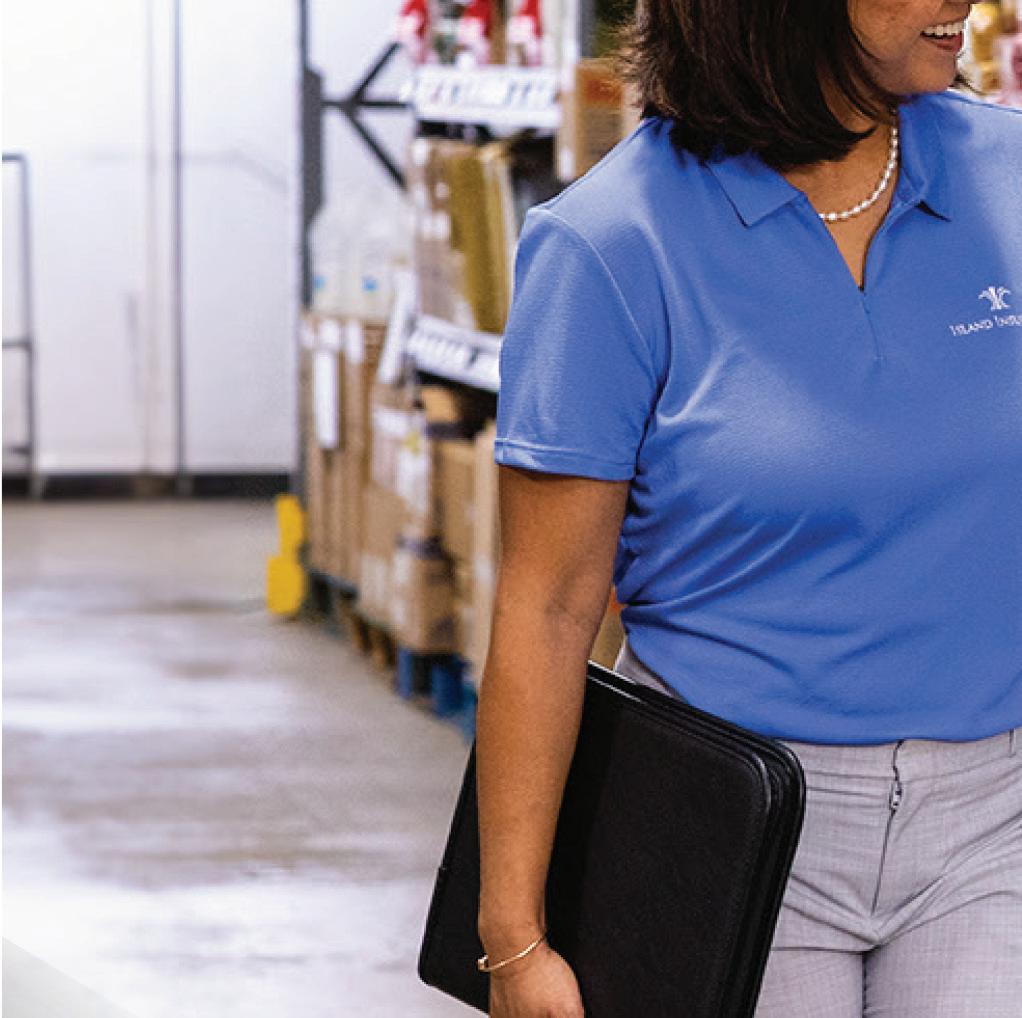







BY SHELBY MATTOS
OFFICIALS EXPECT MANY MORE RIDERS WHEN THE AIRPORT TO MIDDLE STREET SEGMENT OPENS IN 2025. AND THOUGH PROJECTED FUNDING ONLY TAKES THE NEXT SEGMENT TO SOUTH STREET IN 2031, HART LEADERS ARE STILL EAGER TO EXTEND THE LINE TO ALA MOANA CENTER SOMEDAY.
THE SECOND SEGMENT OF THE SKYLINE RAIL LINE IS EXPECTED TO OPEN IN LATE 2025, according to both the Honolulu Authority for Rapid Transportation and the city’s Department of Transportation Services. That segment will extend the line from Aloha Stadium to the Middle Street Transit Center in Kalihi, with stops at Pearl Harbor, the airport and Lagoon Drive.
Every day, an average of 4,000 passengers ride Skyline between West Kapolei and Aloha Stadium. Transportation officials say they knew that first segment would attract few passengers, but they expect many more once the line to Middle Street is open.
Roger Morton, deputy director of the Department of Transportation Services, says he stresses to people that the rail line wasn’t designed simply to transport people from East Kapolei to the stadium. It was designed as the key first step to eventually get people into central Honolulu and Downtown.
Tests on the second segment, which began in June 2024, are done at night after the first segment closes. During the tests, operators run the trains at full speed. Construction of the second segment and its infrastructure is 99% complete, HART COO Rick Keene says, adding that once testing is complete, trial runs will begin in the second quarter of 2025.
National construction contractor Tutor Perini was the only company to bid on the contract to build Skyline’s third segment, which runs to the corner of Halekauwila and South streets in Kaka‘ako. That station has been dubbed Ka‘ākaukukui.
HART CEO Lori Kahikina says that for now, expected funding only takes the rail to South Street but that any money left over after that segment is complete could be used to help extend the line further. In 2017, the Honolulu City Council voted to require that the route run at a minimum from Kapolei to Ala Moana Center – two stops beyond the Ka‘ākaukukui station, but current projections of the funding won’t pay for those last two stops.
HART often refers to the Ka‘ākaukukui station as the Civic Center station, but that name is misleading because Civic Center currently refers to the cluster of municipal buildings and lawns anchored by City Hall and the Fasi Municipal Building on King Street, two blocks mauka of the planned rail station.
Tutor Perini expects to have shovels in the ground starting June 1 and to start in two to three different locations going in

different directions. Kahikina says she’s confident the company will finish its work in 2031.
“We haven’t missed a deadline yet, so we’ll see what unforeseen things that we encounter,” Kahikina says. “But our funding ends in 2031, so we’ll make sure we finish it on time.”
Keene says he believes all of the money to pay for that third segment to Kaka‘ako will be received by 2031.
And if HART’s leaders have their way, that won’t be the end of the line.
“We’re so committed to find a way to get to Ala Moana [Center], which we still want to do, but a lot of it’s going to depend upon how this new contract starts out, our anticipated cash at the end, how much room we have to keep going financially,” Keene says.
“If you look at almost every other [urban rail] system in the country, as people start using it, as people see the utility of it, then there’s a demand for taking it further,” Kahikina says.
Morton says the rail line is going to be with us for the next 75 years and that it will grow to accommodate new developments and population centers that spring up over that time.



“It is on track to be a key part of our infrastructure,” Morton says.
For now, the trains run Monday through Friday from 5 a.m. to 7 p.m. and weekends from 8 a.m. until 7 p.m. But that will change: A common complaint among riders and potential riders has been Skyline’s limited operating hours.
Morton says HART has always acknowledged that Skyline should
stay open later, but says expanding the hours wouldn’t make financial sense until the second segment opens and there are more riders. When that happens, he says, the hours will be expanded.
“The reality was that we knew that our first segment wasn’t really connecting population centers to employment centers, that we knew that the ridership would not be great, and so therefore we didn’t think keeping it open [longer] made any sense” for the first segment.
When that first segment opened in 2023, the Department of Transportation Services changed bus routes to align with it. That will happen again with the second rail segment, but this time “on steroids,” Morton says. Most changes will be at the Lagoon Drive and Middle Street stations, with bus routes to accommodate people traveling to and from Downtown, Waikīkī and UH Mānoa.




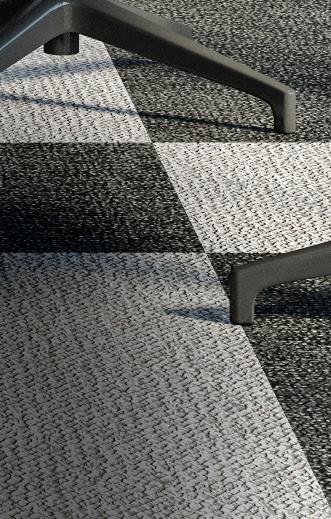





BY KATHRYN DRURY WAGNER
THE HUI KAPILI ACCELERATOR PROGRAM
FEEDS THE STATE’S PIPELINE OF BUILDING INDUSTRY CONTRACTORS

PLANS, SUPPORT AND STRUCTURE: FOR THE PEOPLE WHO BUILD AND REMODEL HOMES, ALL ARE IMPORTANT. And now, a new accelerator program called Hui Kapili mentors and supports small and medium-size construction-related companies, teeing them up for success and longevity.
The program is a partnership between American Savings Bank and Hawaii Home + Remodeling magazine, a sister publication of Hawaii Business. The inaugural cohort of 16 leaders from 10 businesses graduated in November 2024.
The idea for the program took shape in 2024, says Cyd Rosa, publisher of Hawaii Home + Remodeling.
“I’d been having some interesting conversations with clients and people in the industry, and the general consensus was that after Covid, people started slowing down on their remodeling. Some of the businesses didn’t have the right
know-how to continue to maintain their business. They knew what it took to build a house, but not a business.”
Hui Kapili helps provide solutions to several vital challenges facing Hawai‘i, including a labor shortage, out-migration and a dearth of homes – especially affordable ones – notes Billy Pieper, senior VP and director of strategic partnerships at American Savings Bank.
“By equipping these businesses to flourish, they can then hire people in jobs with good-paying wages. These jobs, you can really make a living at them,” Pieper says. Growing these businesses, about 80% of which have been in business five to seven years, also creates a strong pipeline to make up for older businesses in the building industry that are sunsetting, he explains.
Additionally, having a ready pool of affordable contractors in the state makes it easier for residents to hire them for projects such as ADUs, aging-in-place remodels, and modifications that allow for multigenerational living.
The accelerator’s hui met on Tuesdays for 10 weeks of classroom sessions, as well as one off-site team-building service project. For the service project, cohort participants built planter boxes for vegetable gardening at Paepae o He‘eia fishpond. “That’s how we started the program,” says Rosa, “everyone getting dirty, getting muddy, moving rocks, sawing wood.”
The weekly classes, which included help from subject matter experts, covered everything from marketing and employee safety to cash-flow worksheets and how to build company culture. Rosa gave an example: “A lot of people didn’t know how to take credit card payments so we talked about that.”
Speakers included seasoned building professionals, such as Nan Shin, who started Nan Inc. in 1990 as a young entrepreneur and has since grown it to become one of the state’s largest locally owned general contractors. “Nan, you cannot get him out to lunch or to golf,” says Rosa.
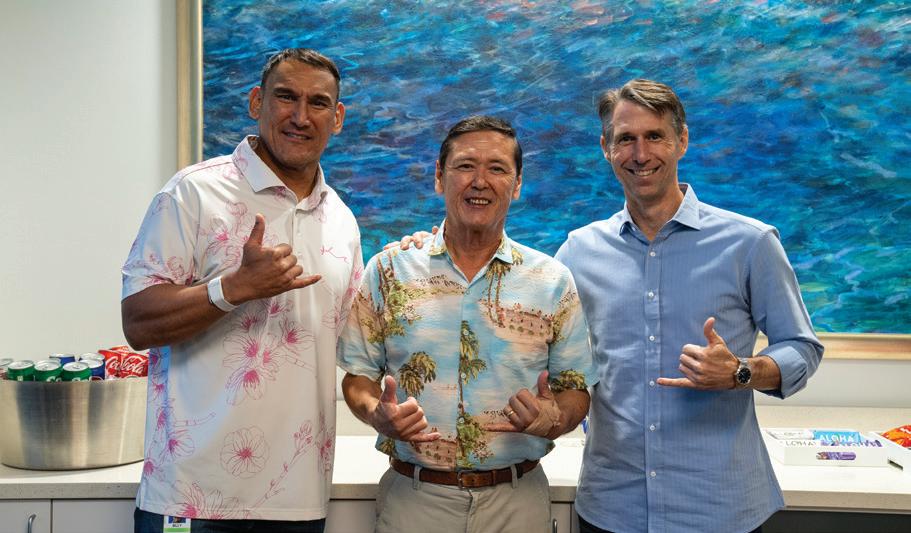
“He just works. But he came in and talked about what he’s learned.”
Among the other speakers were real estate teacher Abe Lee, who discussed sales, and Roseann Frietas, CEO of the Building Industry Association of Hawaii, who led a session on markups and margins. “David Hijirida of ProService came in to talk about what he had learned when he was (working at) Amazon; Stanford Carr spoke to the team about what his career is like,” says Rosa.
Tiffanie Gardner, general manager of Top Priority, a custom fabricator and installer of countertops and surfaces, was among the cohort members. “They hit it out of the park with this,” she says. “It was geared to the general contracting industry and you don’t see a lot of cohorts geared to our industry. We have organizations but before, nothing specific to drill down to learn how to grow in this environment in Hawai‘i.”
Gardner’s goal is to keep growing her company. “We went from $2 million a year to $7 million a year in the last three years and want to continue that tra-
jectory,” she explains. “This was an especially good opportunity to work with the bank, learning about the lending environment. As we scale, we need to be more financially savvy. We learned about forecasting for a WIP, or Work In Progress, which I started to immediately insert into our business model.”
Of the 10 businesses invited, Gardner says, eight were general contractors and two were subcontractors. “Part of it for me was learning from my peers. How can we better address the needs of general contractors?”
Would she recommend the program to others?
“If I was a small general contracting business, I would run to this opportunity and I would attend again if there was a five-year plan! We really became advocates and friends and ‘ohana, and decided we have some advocacy work to do, with affordable housing and how to get a faster permitting process.”
Rosa says: “This group cares so much about the community. We’d sit and talk sometimes an































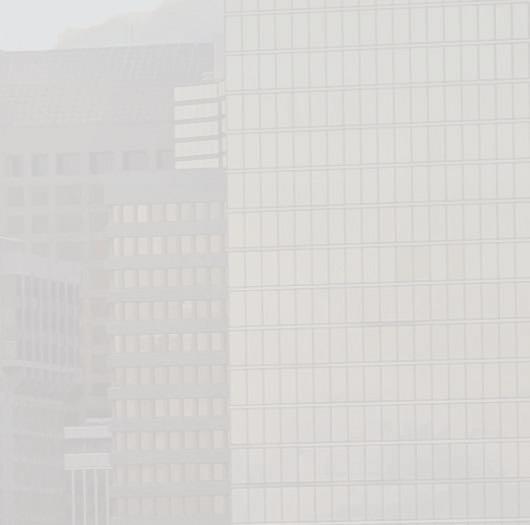


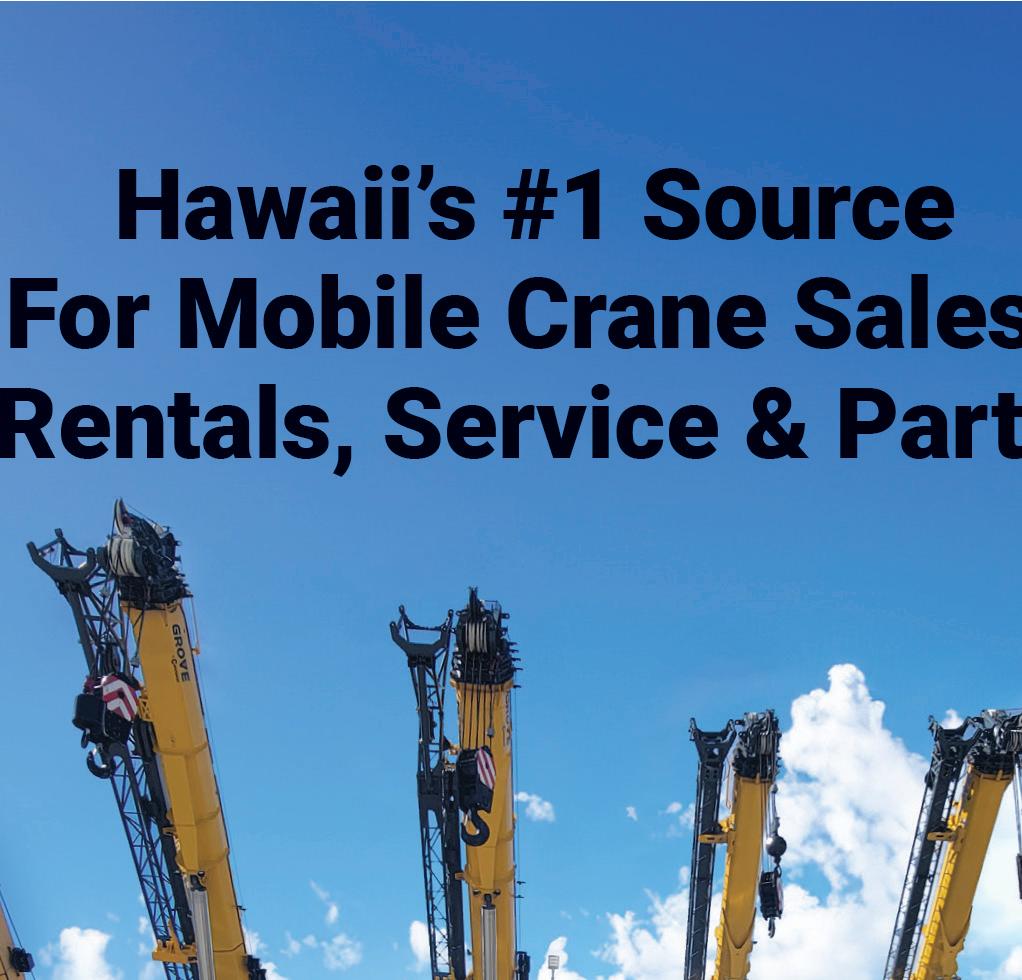






On November 9th 2024, Hawaii Business Magazine and presenting sponsor Hawaii State Federal Credit Union hosted the inaugural Money Matters Financial Conference at Mid-Pacific. This full-day conference offered 17 sessions and over 50 speakers and presenters, sharing their insight on various personal financial topics. This conference was tailored to benefit the community at large, hosting 5 different “tracks” to choose your area of interest: Kūpuna, Retirement Planning, Getting Back on Track, Getting Started and Small Business.










“Hawaii State Federal Credit Union was honored Hawaii Business Magazine for the inaugural Money Matters Financial Conference. As the title sponsor, we were grateful for the opportunity to give back to the community and share two of our three Community Impact areas — Financial Literacy and Kūpuna. The event was dedicated to empowering people with the knowledge and tools for a brighter financial future. A heartfelt mahalo to all the speakers and sponsors whose efforts made the Money Matters Conference a success! The commitment and enthusiasm for financial well-being were evident in
to partner with every attendee.”
, SVP, CHIEF OF STAFF, HAWAII STATE FEDERAL CREDIT UNION
“At Mid-Pacific, we help our students become world-ready—empowering them with the confidence, adaptability, and integrity they need to flourish in today’s complex world. Just as the Money Matters Conference provides resources and insights to help us thrive financially, Mid-Pacific’s mission is to teach students to assess, adapt, and communicate effectively—skills, whether in finance or education, that enable people to make sound decisions with purpose and clarity. Mid-Pacific is honored to sponsor the Money Matters Conference, as this conference reflects our commitment to foster growth and resilience—whether it’s in preparing young minds for the future or preparing individuals and businesses to face economic realities.”
—DR. PAUL TURNBULL , PRESIDENT, MID-PACIFIC








“Hawaii Foodservice Alliance is proud to have sponsored the Money Matters Financial Conference. HFA is committed to the growth of Hawai‘i’s community and our HFA team members by investing in their personal and professional growth.”
—CHAD BUCK, FOUNDER, OWNER, HAWAII FOODSERVICE ALLIANCE








ART + FLEA IS A MARKETPLACE WHERE PATRONS CAN MEET MAKERS WHILE CHECKING OUT THEIR CREATIONS . It’s held twice a month at
Capitol Modern, formerly known as the Hawai‘i State Art Museum.
“Art + Flea is the island’s original makers market, and it paved the way for others. Nowadays, makers markets are everywhere,” says Jeff Sanner, Hawaii Business Magazine ’s creative director.
Sanner has been selling his art at Art + Flea for over 13 years. “The space features a diverse range of creators, including illustrators, painters, vintage clothing collectors, cut and sew, woodworkers, crafters and more.”
Aly Ishikuni, who co-founded Art + Flea in 2010, in December opened her latest iteration of MORI, Art + Flea’s permanent store, now inside Capitol Modern. She is pictured in the store with some of the items for sale.
Sanner says the space is a lot “like the Etsy marketplace, but with a local touch. It has provided opportunities for hundreds of small business makers to showcase their goods in a brick-andmortar setting.”
morihawaii.com
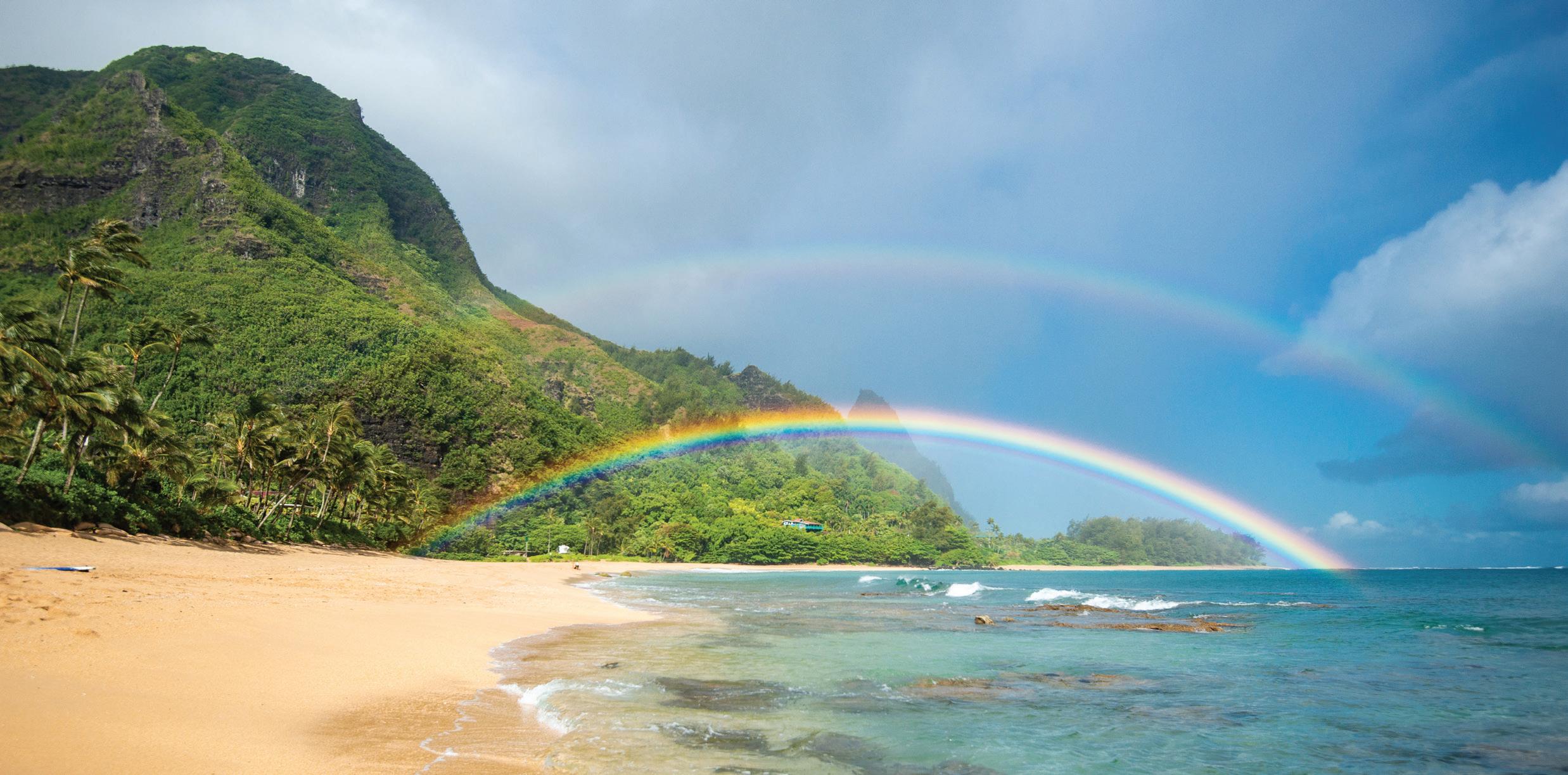


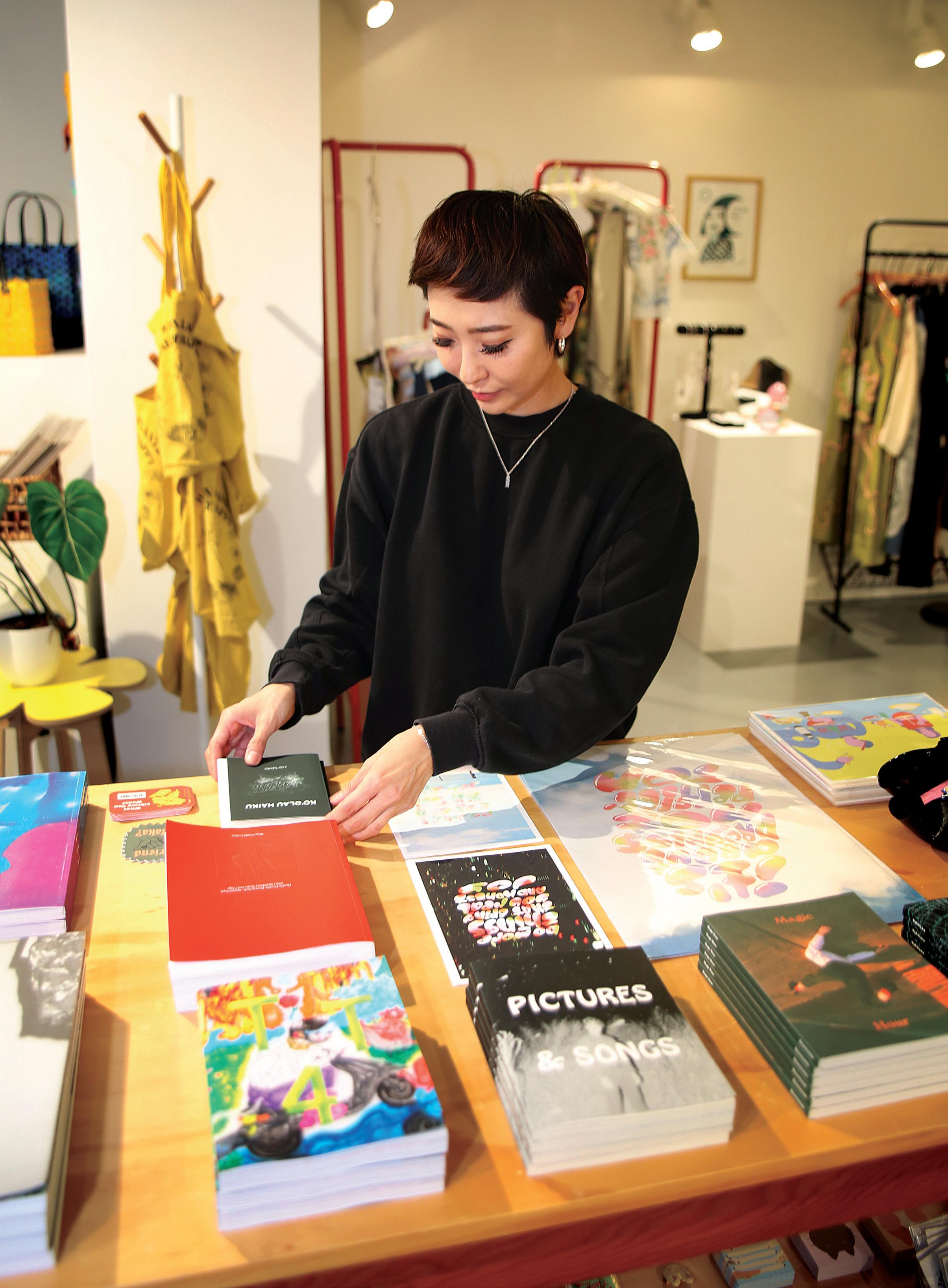






As we look forward to the new year, we’re so glad to have the opportunity to partner with you. Whether you’re a donor who has generously given to support Hawai‘i, or are working with a nonprofit or community-focused organization, your vision and hard work is helping to make a meaningful difference in our Island communities.
If you’re looking for ways to make a difference in 2025, consider making a contribution to the Catalyst Fund of the Hawai‘i Community Foundation. The Catalyst Fund powers HCF’s many programs, including day-to-day operating support, early seed funding for innovative projects, and research and development.
Or learn more about HCF’s broad range of funds supporting crucial needs such as fresh water security for Hawai‘i, affordable housing on Maui, and early childhood mental healthcare.
To make a donation, scan the QR code or visit hawaiicommunityfoundation.org/give, or you can connect with our team at hawaiicommunityfoundation.org/donors.
hawaiicommunityfoundation.org

